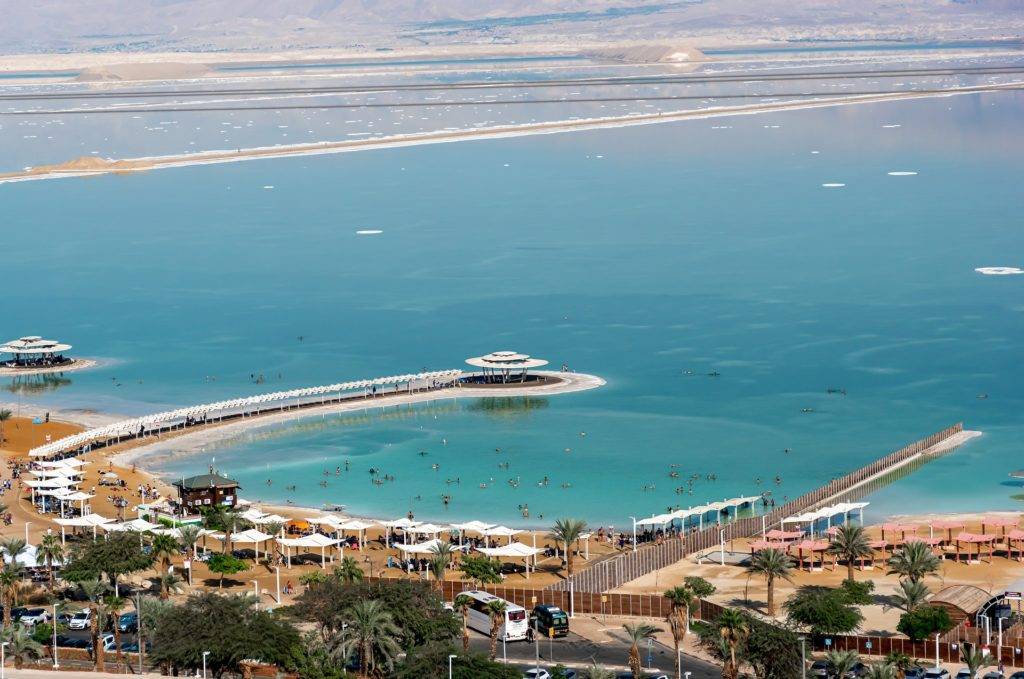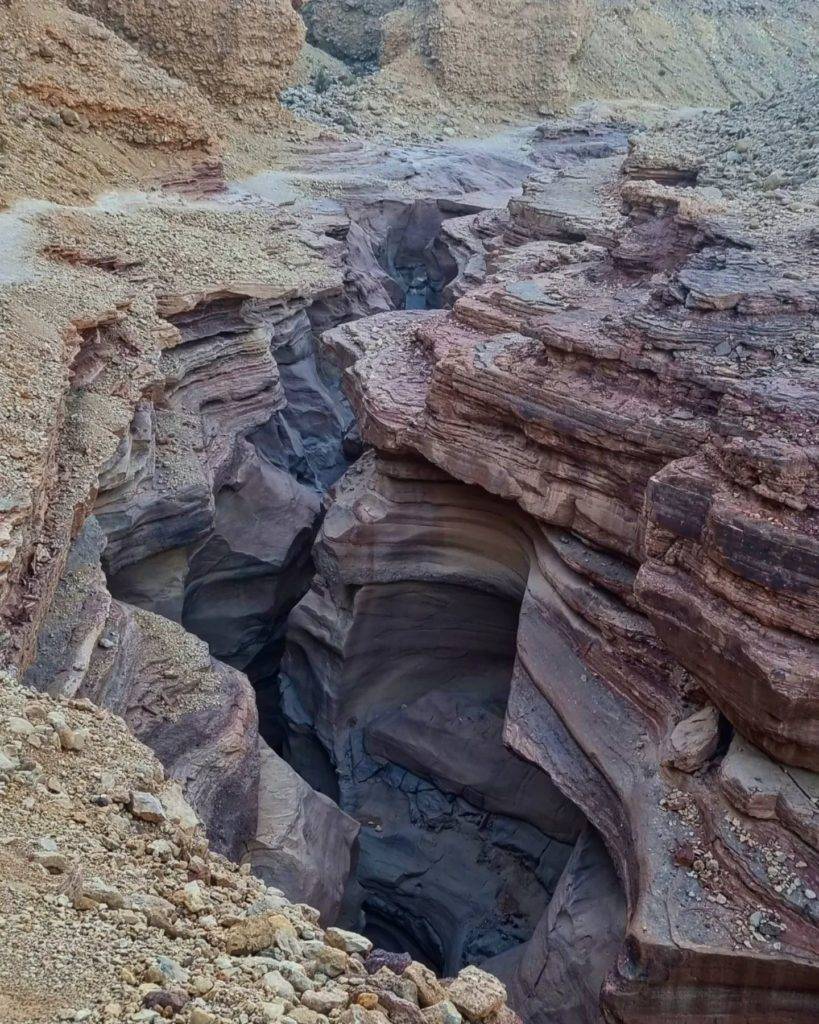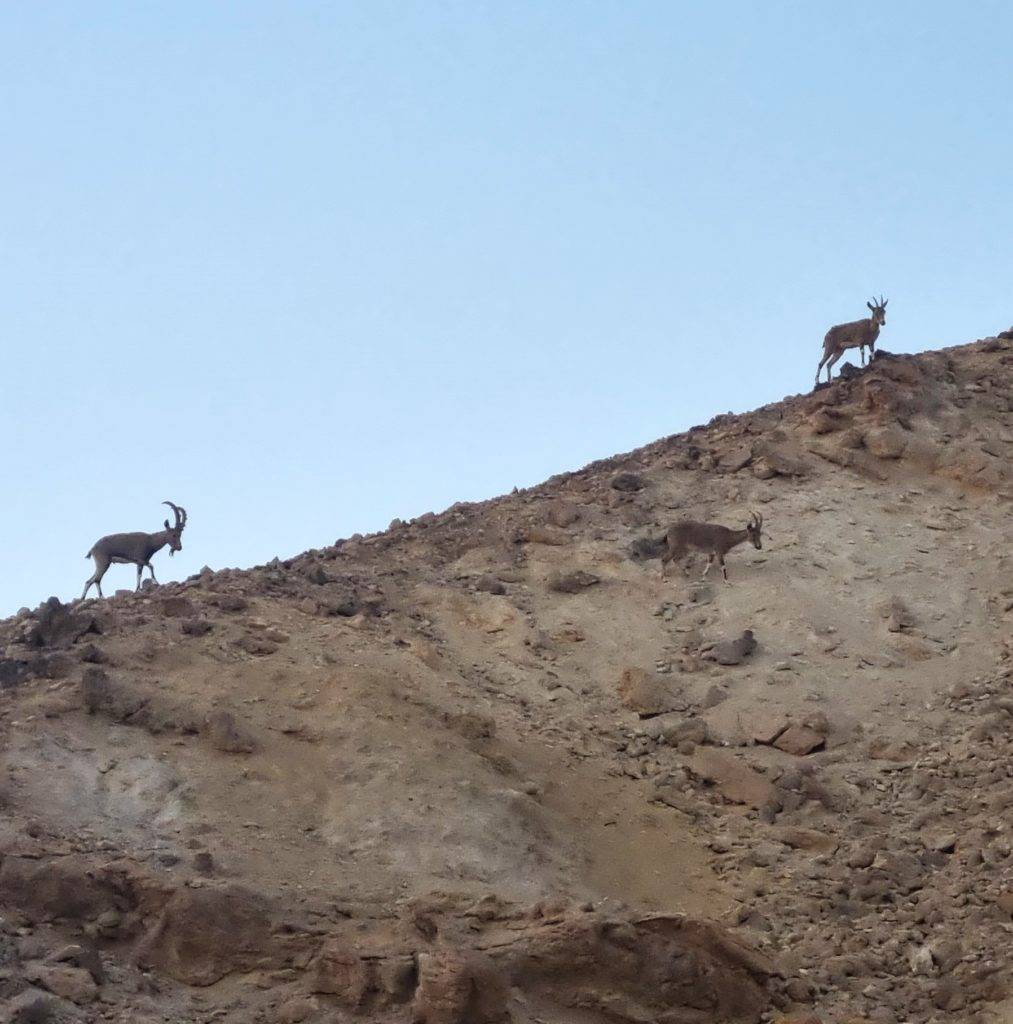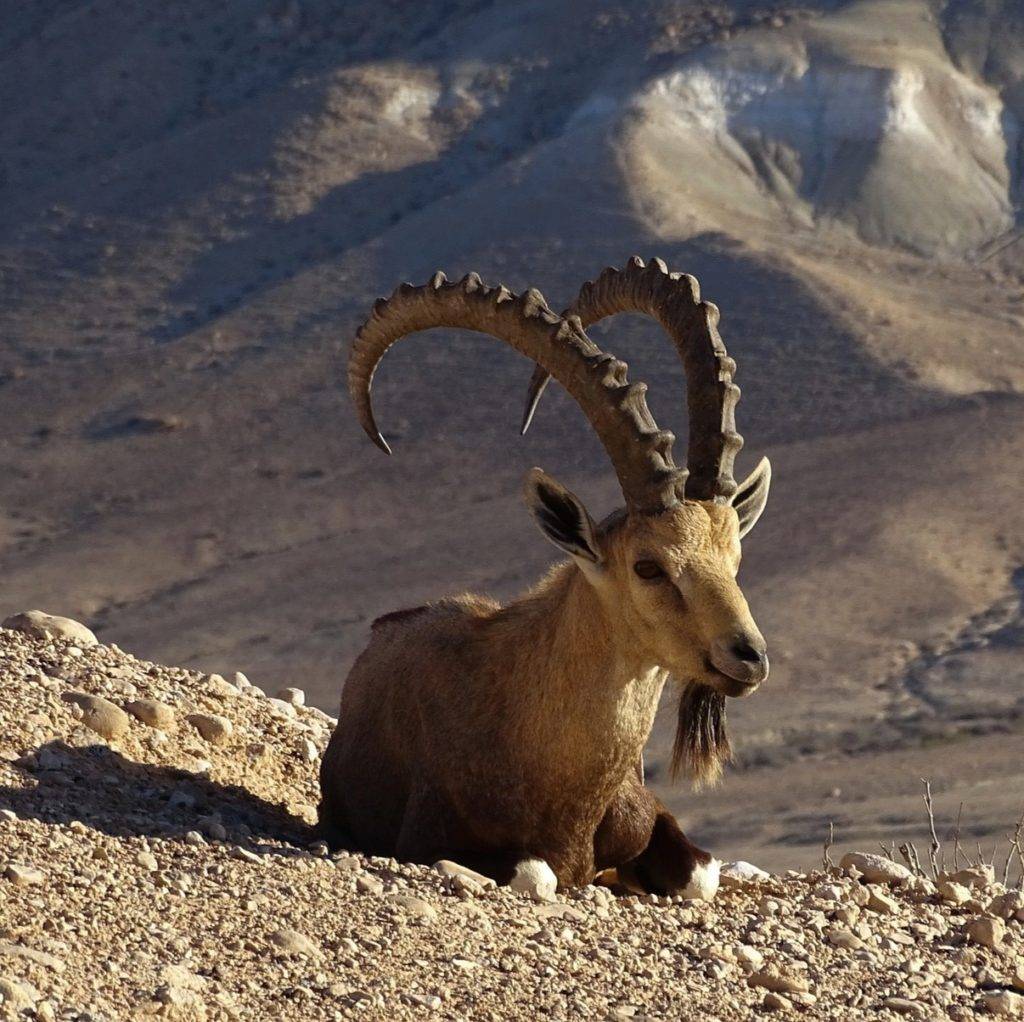Israel
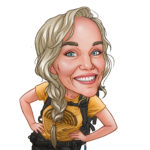
By Jaimy de Vries
We went on a surprise visit to Israel to visit Jaron’s family. It turns out Israel is a great and diverse holiday destination. Israel is home to incredible historical and religious sites, the mineral-rich Dead Sea (which is also the lowest point on Earth), a lively nightlife, and a world-class food scene. As an epicenter for three major religions, Israel has a lot of important shrines and pilgrimage destinations. Besides the diversity of people and religions, the landscape is very diverse too: from dry dessert, to canyons, beaches, forest and in the winter you could even go skiing in the north.
A warm hug
The day of arrival in Tel Aviv airport we were picked up by Jaron’s mom and aunt. After such a long time it was great to see family again. It felt like coming home. We visit Israel because it’s of course an amazing country but also because Jaron has family living there. We visited his aunts, nephews and nieces. They were all so sweet and welcoming and I’m so happy I got to meet them all.
Israel is very modern, different than what I’d expected. It was even more modern than Europe. Their public transport it definitely twice as good as ours and the streets are really clean and well maintained. I loved the art along the way and on round-a-bounds and the beautiful graffiti on buildings. Lots of historical sites, what Israel is rich of, that is open for the public with easy acces to information.
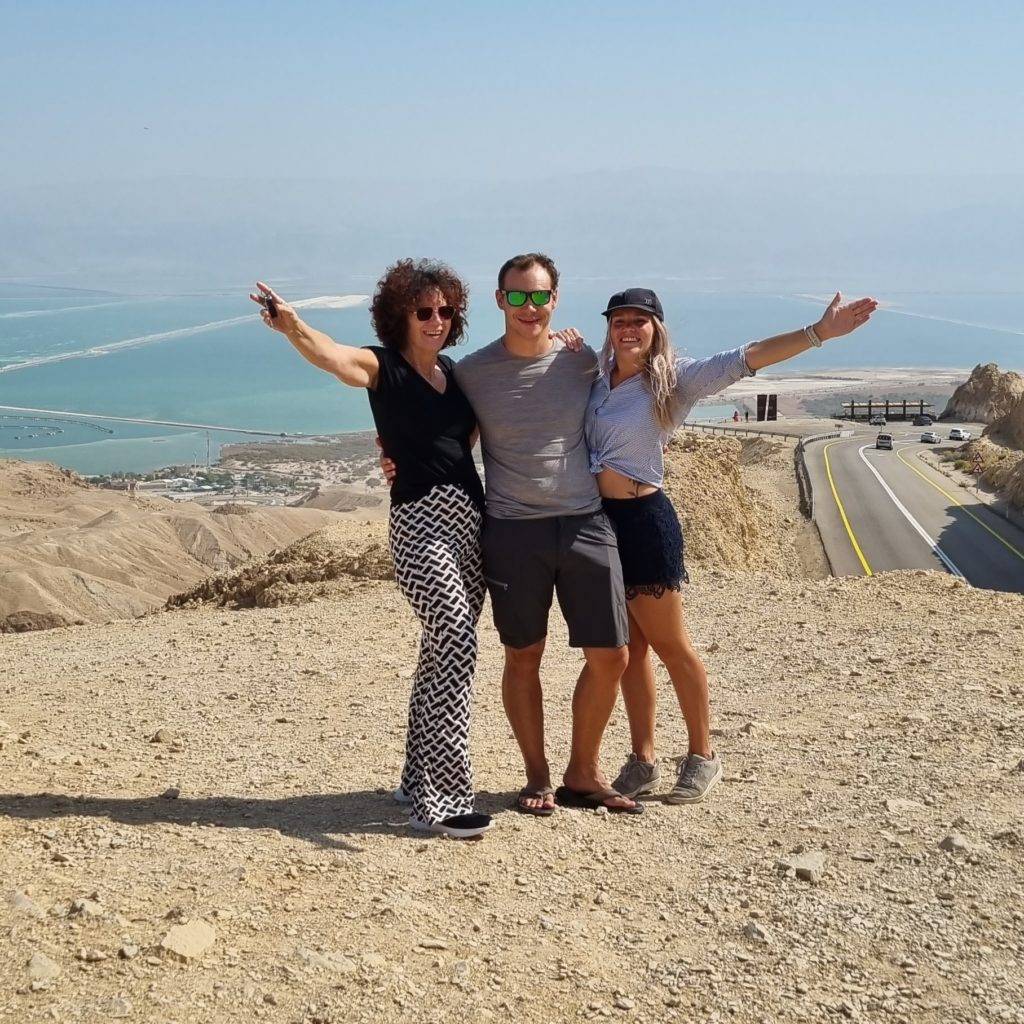
Together with Jaron’ s mum
Safety?
I thought Israel would be quite dangerous, but I felt really safe travelling here. On the news you hear about the never ending war between Palestine and Israel. But walking through Israel you see all cultures living peaceful among side: Jews, Christians and Islamic people. But it can suddenly change in Israel when tension starts to rise. Because of the history which lots om bombing, all the houses close to the Gaza strip has safe houses inside. A safe house is a room with thick walls supported by steel structures. It’s to prevent walls falling down when bombs hit nearby. I was told that all families including young kids are well drilled when an alarm goes off and they know where to find the quickest safe room. Al Israeli’s are obligated to join the military service after high school. There are some exceptions: religious women, married individuals and those deemed unfit medically or mentally. You’ll see lots of people in the army using public transport or walking on the street when they’re off work or of course when they’re on the job. The army is well trained to make sure public places, especially places that form a higher risk of terrorism, are well protected.
Critics on Israel
There are so many people who have an opinion about Israel and the politics. From outside everyone is watching…but to gain an objective opinion, you’ll need to experience and hear the stories of the people living here. It’s important to know that the tension in Israel is not due to a story of 80 years old. No! It dates back to more than 2000 years BC! And most of the people, the average civilization, are peacefully living amongst each other. There are so many cultures living together, not only the Jews and Arabic’s, but also Christians, Russians, Americans and more! Don’t judge to quick!
Not so touristy side
Because we stayed with family outside the main capital we got to experience things and visited places that other tourist don’t do. We stayed mainly in Ashkelon, a city that’s a 40 minute drive from Tel Aviv without traffic. And that last one is quite rare because traffic is crazy nowadays in Israel. Israel’s community is growing and growing. Many cities close to the sea are building big apartment buildings who are fighting for even a slightest view over the sea.
Ashkelon is not a tourist spot, but it has everything: white sandy beaches at the Mediterranean Sea with turquoise water and lots of free facilities like showers and big sun parasols. Ashkelon also has a national park with lots of archaeological excavations from 2000 B.C.
We also did some things tourists wouldn’t normally do, like staying at a family’s house, help cooking and eating together. We learned some about Israeli cooking and Israeli’s are very good cooks! We visited Jaron’s niece at her work in one of the biggest office buildings in Tel Aviv and another niece in Askelon that works at a child-parent clinic, called drop of milk. It’s the same job that I did back home. That was very interesting for me to see and I was surprised how similar it was. We also visited the graveyard of Jaron’s uncles and we had a beautiful memorial. I learned that here in Israel the graves stay forever (different from back home) and all the many rocks I saw that was put on the graves – turns out to be part of a very old tradition. When people visit the grave of a loved one they leave stones to show their love to that person and honor him/her. This is what they did a long time ago in the dessert…there were no graveyards of tombstones. So they placed rocks every time they visited the grave.
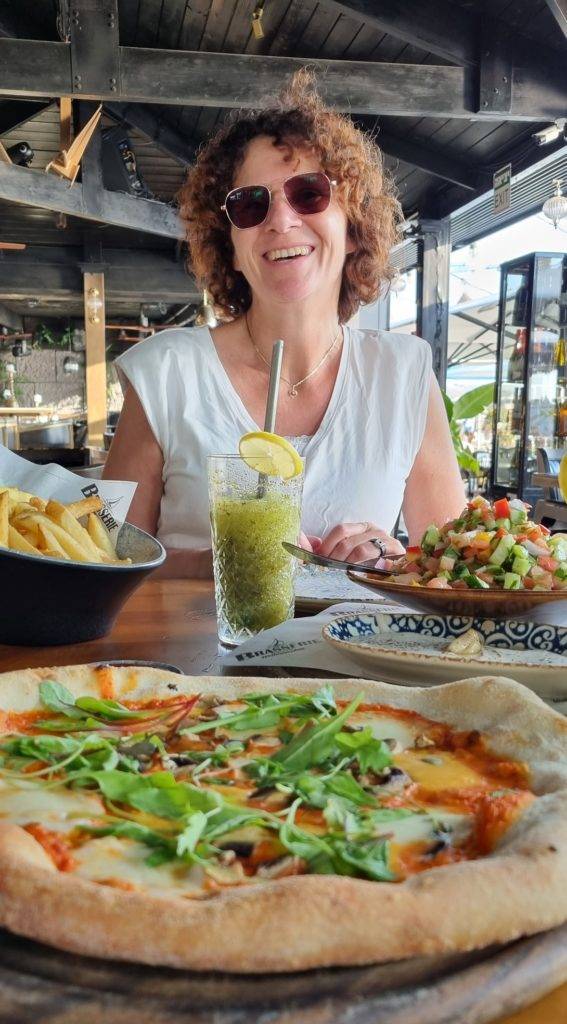
Enjoying our grande lunch
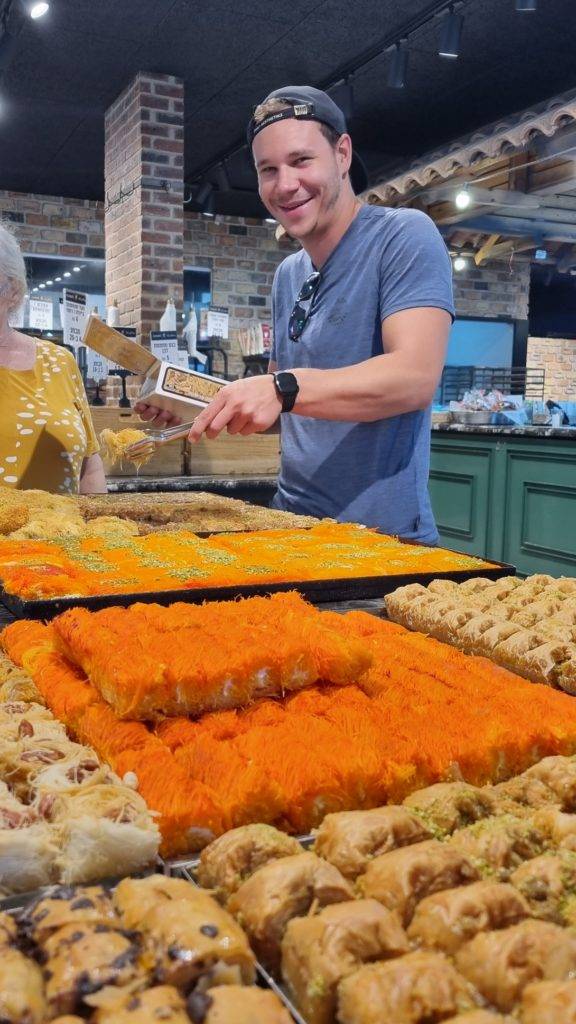
Big fan of baklava
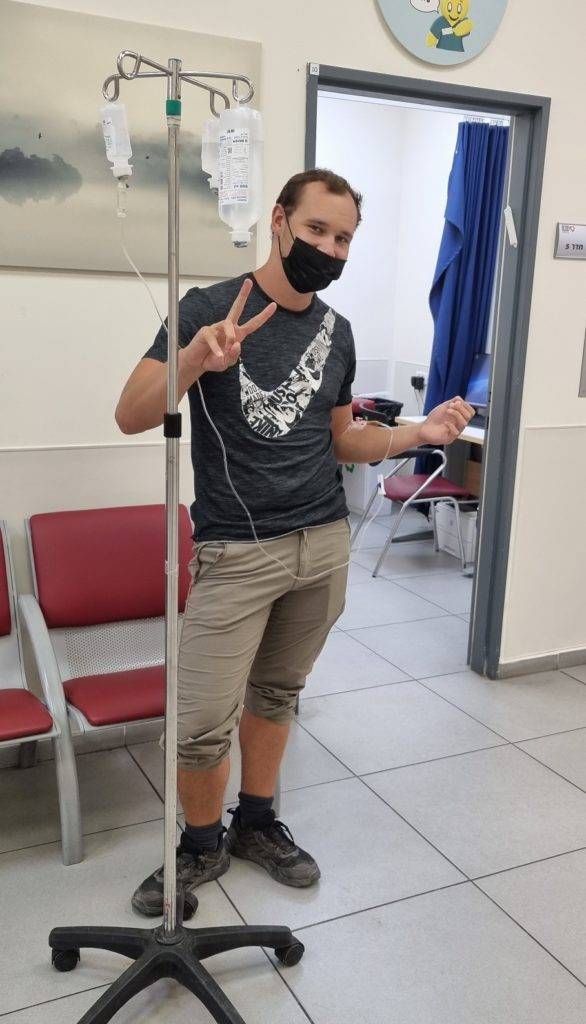
We even visited the clinic because of food poisoning
Dead sea
One of our first tourist activities was of course, the number 1 activity in Israel: the dead sea. We had a rental car and drove down south. Most of Israel, especially the south, is covered in dessert. While in the cities it’s quite green because they build a good watering system and most of them are close to the sea. A while a ago there were still nomads living here in the dessert called the Bedouien who travelled by camels. They still live here, but now they live in small Bedouien villages. We saw some of them along the way and a couple had camels in their backyard.
We drove through the Negev Desert. It’s interesting to see the marks of flooding’s and old water streams in the dessert (lines of green). There is still rain fall and sometimes quite a lot that causes big flooding’s, what has been a danger in this area for thousands of years! It mostly rains at the end of November when it’s rain season.
After a two hour drive we arrived at the Dead Sea. What I didn’t know about the dead sea, is that it’s located 400 meters BELOW sea level. For a Dutchie like me not a scary thought. The lowest point on earth….. How cool is that!? Around the Dead Sea you’ll see many big hotels and lots of tourist facilities. A big selling market at the dead sea is skin treatment. The water in the Dead Sea is rich of minerals and contains more than 8 times the percentage of salt compared to the sea. The minerals help to improve your skin condition. It has a healing effect for people with skin problems like psoriasis. Lots of insurance companies
cover holidays to the Dead Sea for skin treatment. And lots of hotels and retreats make use of that. Most of the beaches are privately owned by these hotels and retreats. But there are still public beaches available making the Dead Sea accessible for everyone. Still lots of people go to the Dead Sea just for fun. Because of the salt in the water you’ll float (salt has a buoyancy effect) what feels very funny. At the public beaches there are lots of facilities. Most important: safety guards, because if you drink the water you need medical help (the percentage of salt and minerals is toxic and cause dehydration). They also have showers to clean off the salt water. Especially very nice if you have small wounds, due to the salt you will feel them keenly! And I can relate!
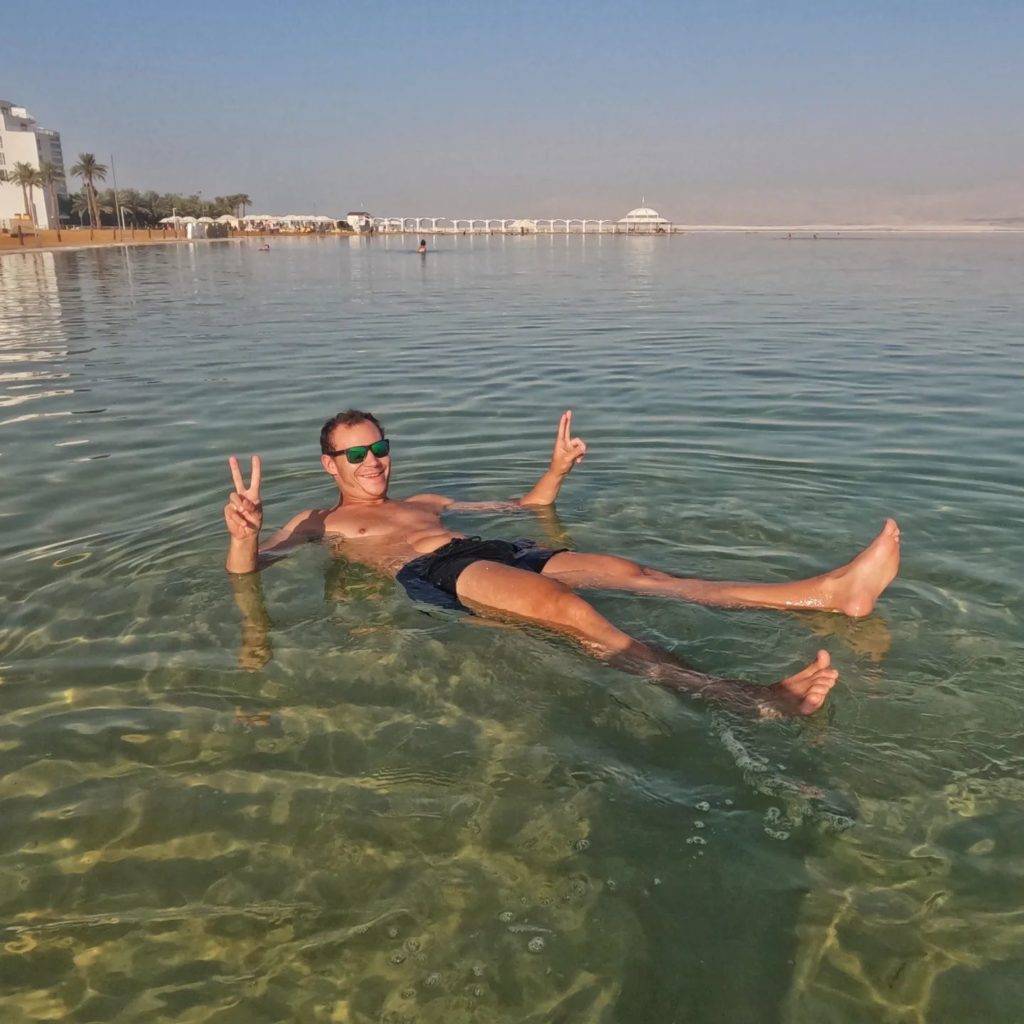
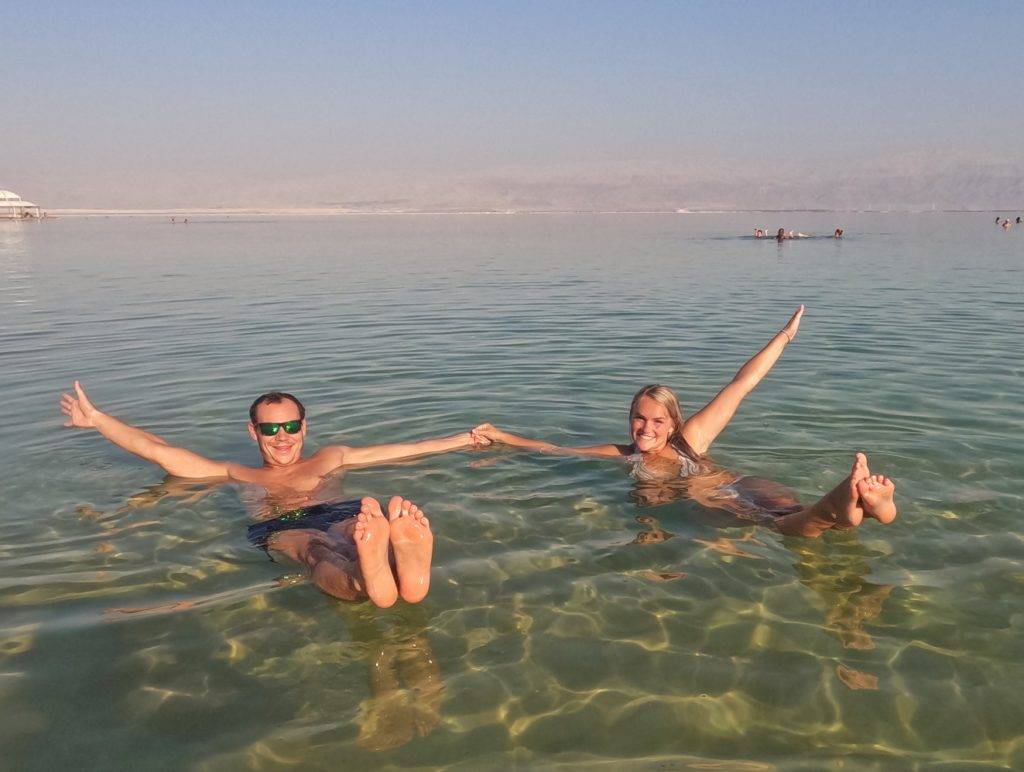
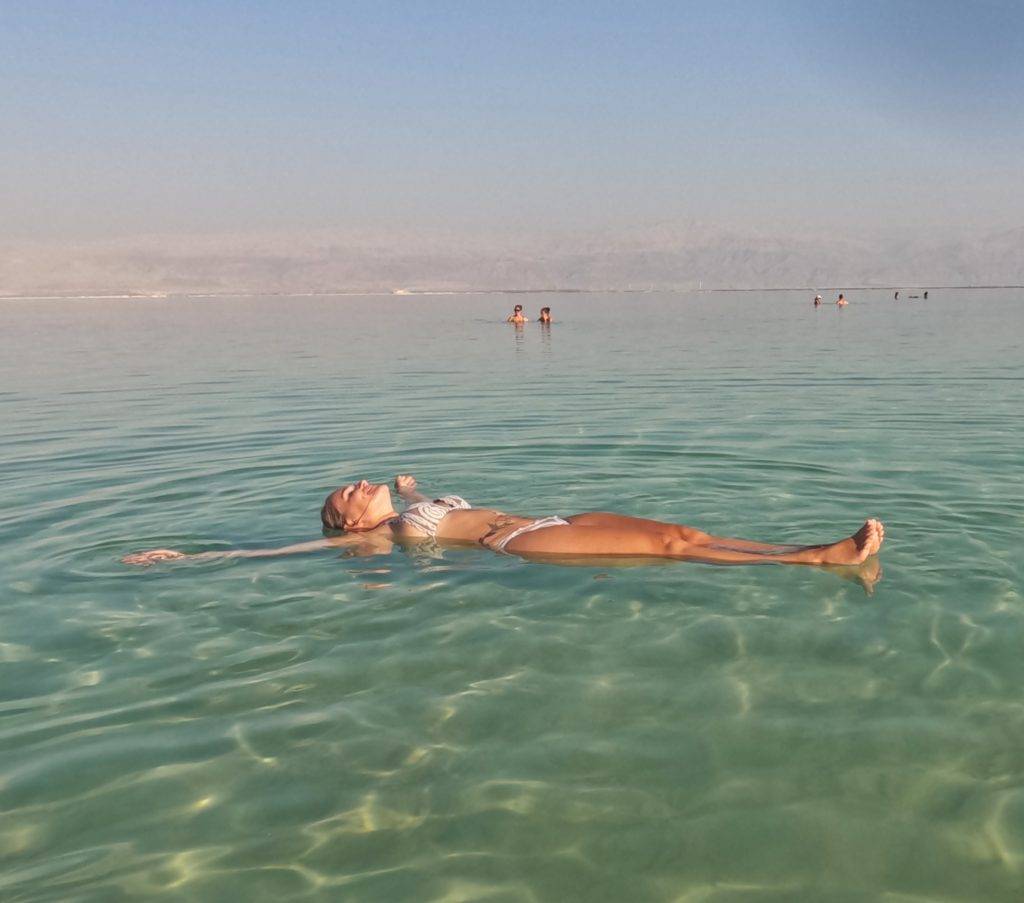
Masada
Close to the Dead Sea and one of the most-visited parts of the Negev Desert is Masada National Park. This was the ancient fortress built by King Herod the Great on a plateau. It’s famed for being a refuge for Jewish rebels against the Roman Empire, who lived up there for seven years before committing mass suicide after a siege by the Romans back in 73 CE. Today, it’s a symbol of Israeli determination and one of the country’s most popular attractions.
You can visit the Masada fortress on two ways: by a cable car or by hiking up the Snake Path (a 60-90 minute hike). Be aware that it can be really hot in summer and sometimes authorities close the path if the weather is too hot. Make sure you bring lots of water (at the top you can refill your bottle).
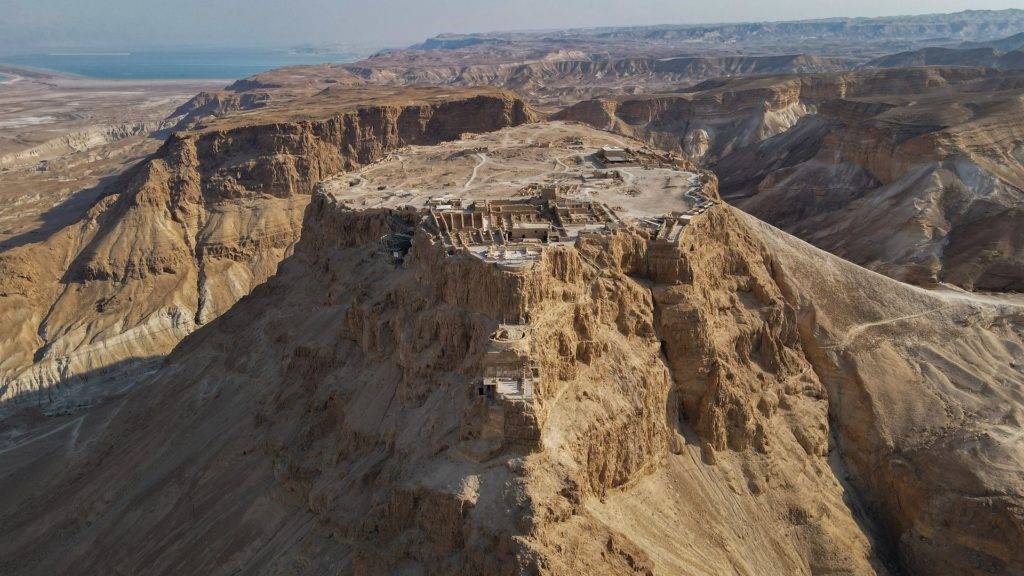
View over Masada Fortress. Picture of Samir Smier from Pixabay.
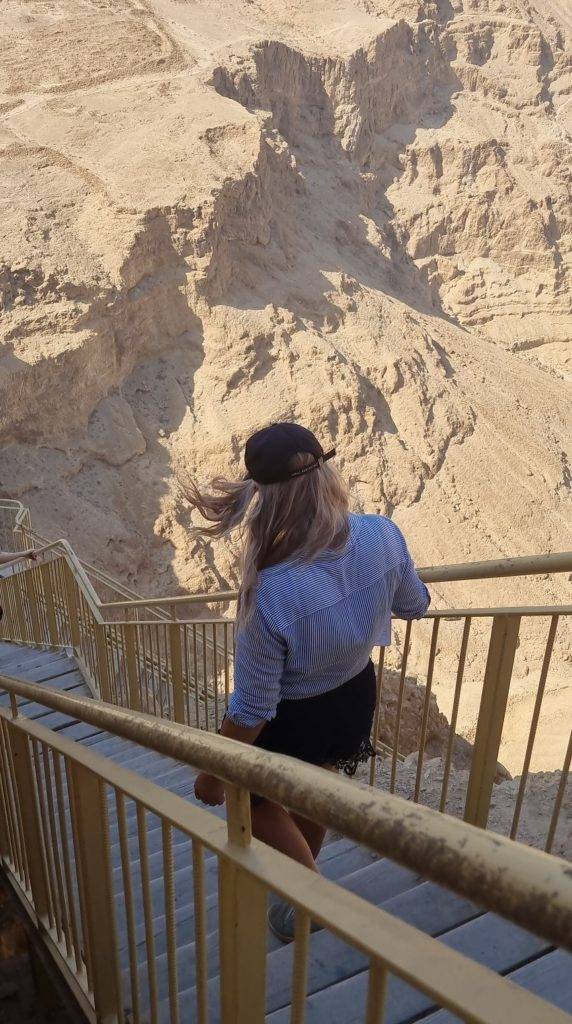
Walking down one of the many stairs
Jerusalem
On another occasion we visited Jerusalem with the whole family. We needed to de dressed with an extra layer, because Jerusalem lays higher in the mountains and therefore is much colder. Jerusalem is one of the oldest cities in the world, with history stretching back about 5,000 years. It is referred to as “the Holy City”. Jerusalem holds an important place in three of the world’s major religions: Christianity, Judaism, and Islam. Jerusalem is a big and crowded city, it’s home to over a million people.
We saw a big difference in people between the coastal cities and Jerusalem. Here they’re more conservative. You’ll see lots of men wearing traditional hats or keppel’s and women dressed in long skirts and sometimes with their hair covered.
First we went to Machaneh Yehudah market where we tried all kinds of Israeli food. The Israeli’s have a good taste for delicious food. It’s because Israel is full of different cultures, religions and they come from all over the world and Israeli like travelling (I’ve met many during my other travels). It was so nice!! The market was full of different strong scents, from a spicy curry, to fresh fruit and roasting coffee beans. And the market was alive, people where singing and dancing. We tried different dishes: baklava, shwarma (Arabic) and kumafa (Turkish dessert). After eating our belly round, we went to the old town of Jerusalem.
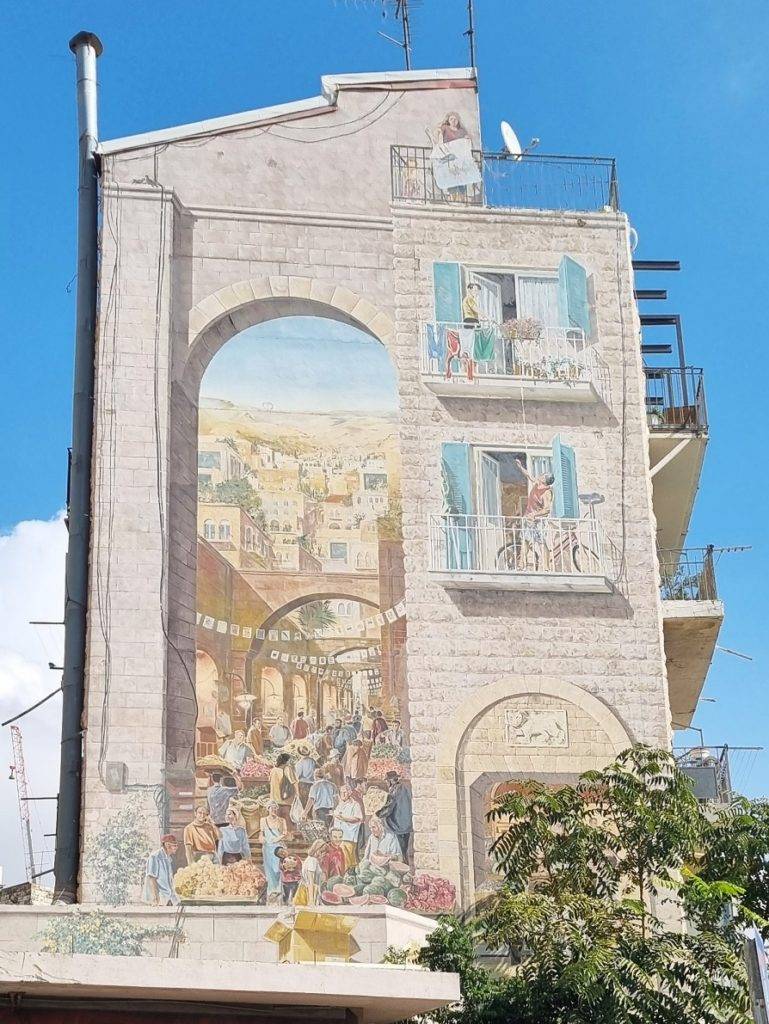
Drawing of the old city
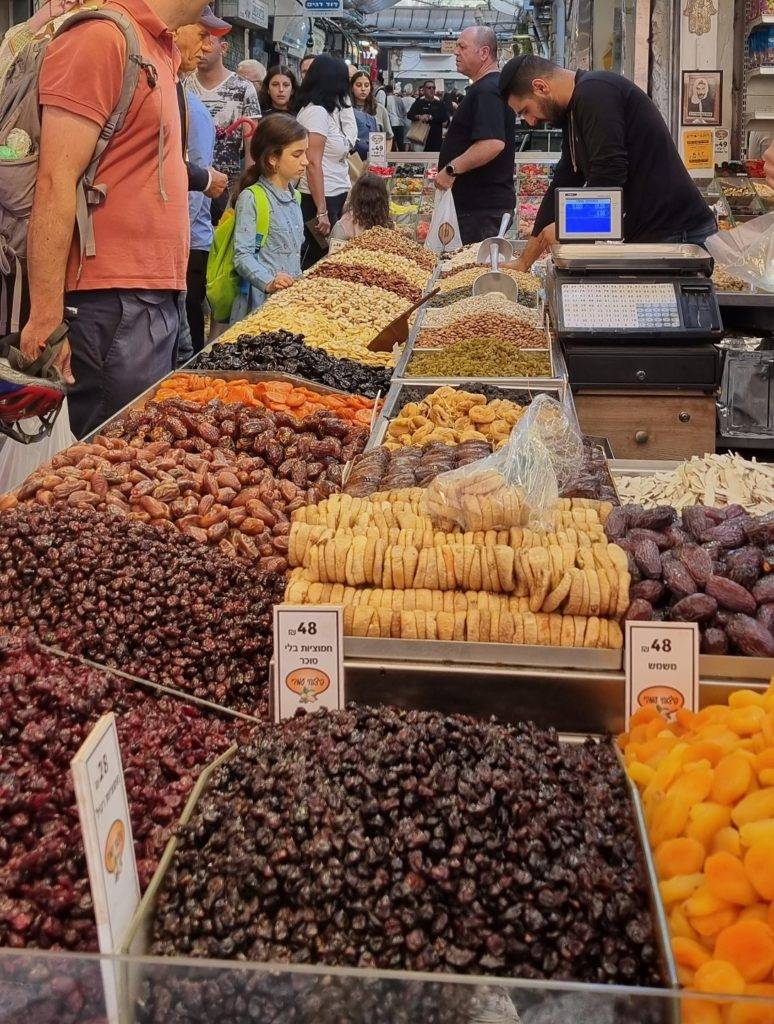
Herbs & spices at the market
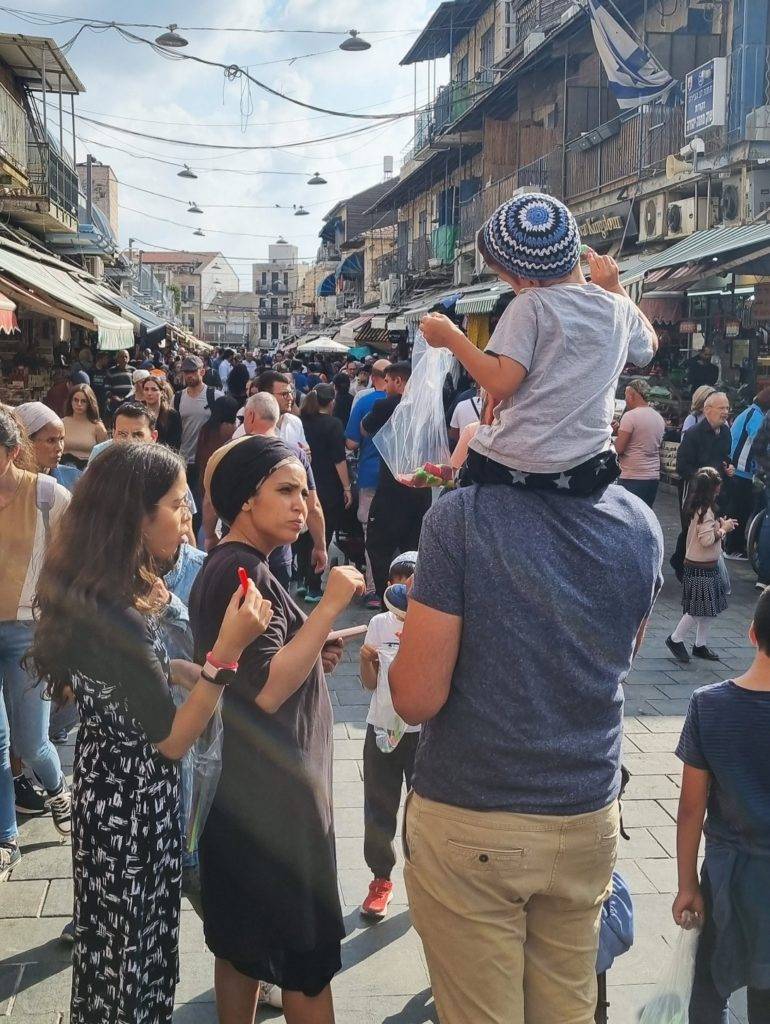
Enjoying the food all together
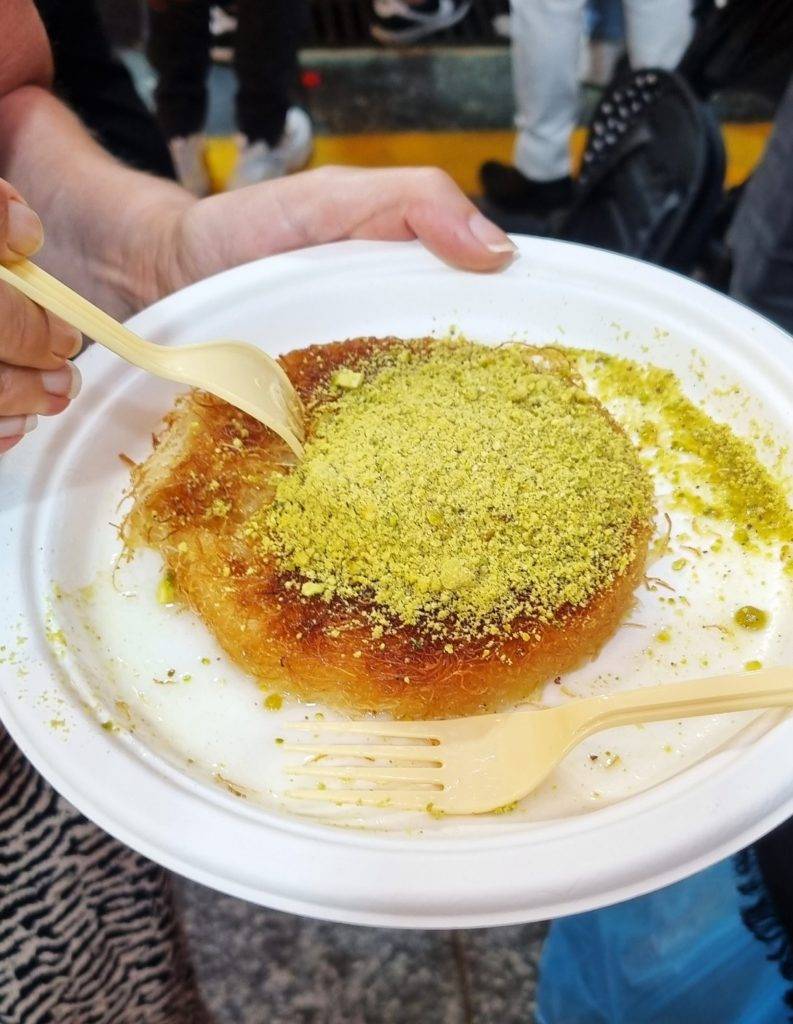
Turkish dessert
The walled Old City has many famous and significant sites. It’s the place in Israel where lots of tension is. It’s because this place is considered the holiest place for Jews, the Muslims and the Christians. For the Jews it’s the western wall – the Dome of the Rock and the Al-Aqsa Mosque on the Temple Mount (just above the Western Wall) for the Muslims – and the Via Dolorosa and the Church of the Holy Sepulchre (the path of Jesus’s final walk) for the Christians. We only visited the western wall (wailing wall). It is divided into men’s and women’s sections, and there are tunnels on one side that can be explored. I visited the women section. Just as many others I put my hand on the wall to do a prayer. A funny part is that after the prayer all the people walk backwards, because it’s disrespectful to point your back to the wall. You’ll see lots of people bumping into each or chairs.
After our visit to the wailing wall it started to get dark. We walked back through a small street with lots of souvenirs shops. A nice place for shopping. In Israel it’s quite common, especially at the market to discus the price and make a good deal. I did my best to get a good deal for a Kashmir wool scarf for my grandma.
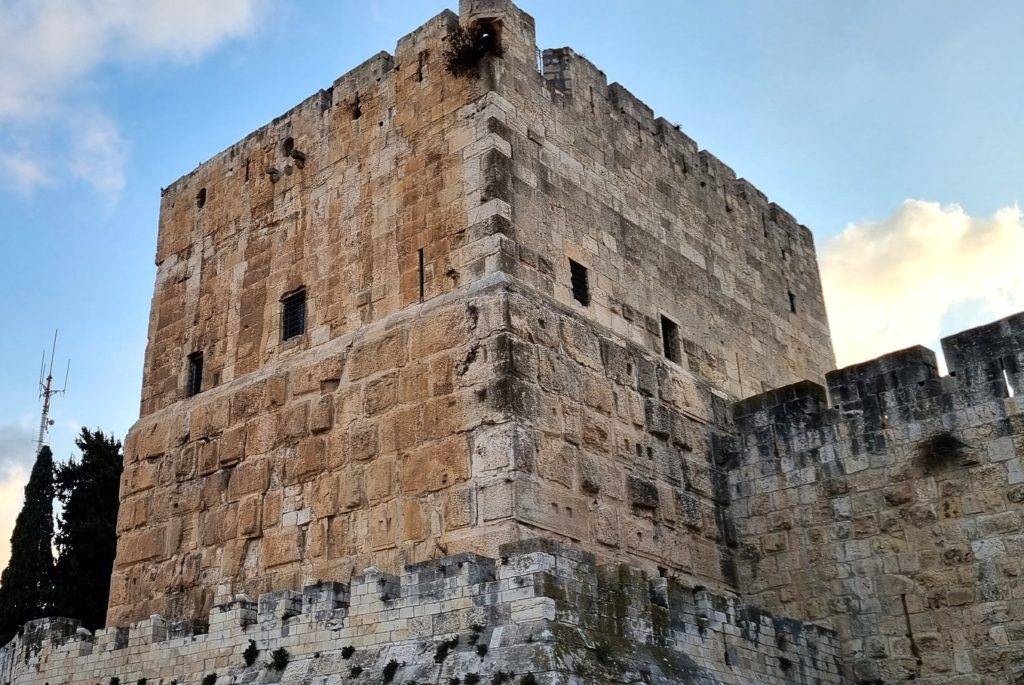
The old city wall
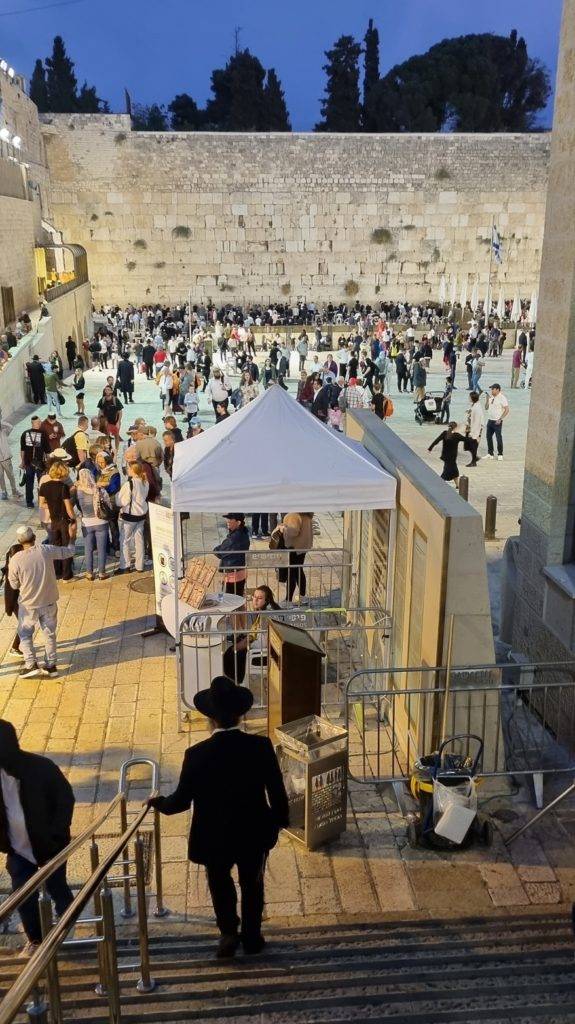
View over the wailing wall
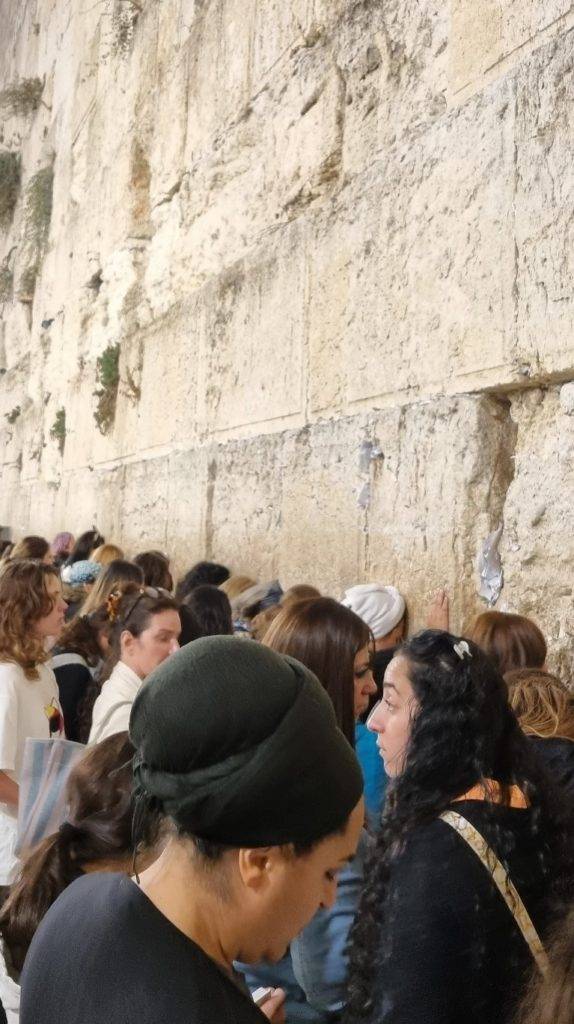
The wailing wall
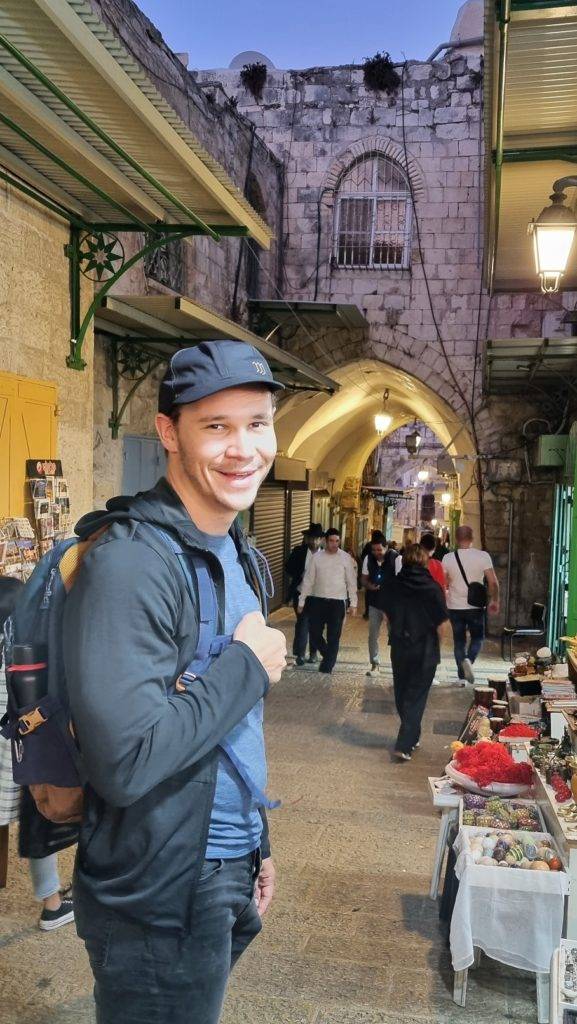
Market within the old city
Bahia gardens
We went to Haifa, a relaxed port city on Mount Carmel in the north. We went there to visit the UNESCO world heritage site: Baha’i Gardens in the city center, a beautiful terraced garden that is home to the golden-domed Baha’i Shrine of the Báb. The Haifa gardens are a holy place for the Bahá’í pilgrims who travel here from every part of the globe to visit and pray at this sacred spot. Bahá’í Faith is a monotheistic religion. It’s a relative new religion born in the nineteenth century. They’re all over the world. They believe in giving back to the community without getting anything back. They built these sites as a gift to humanity and are open to every single member of the human race. Bahá’í Gardens are religious sites that are open to the general public without charge. As in most other such sites, visitors are asked to wear modest clothing that covers their shoulders and reaches their knees, to help keep the place clean and beautiful, and to behave in a manner that is considerate of the sensitivities of others
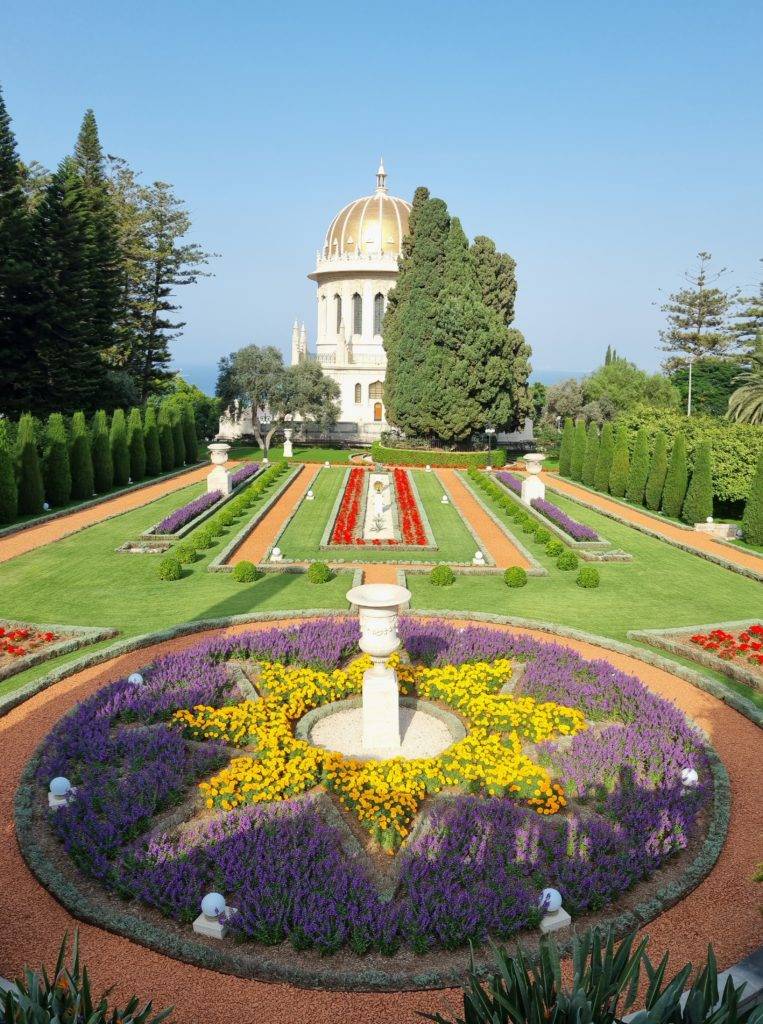
Baha’i Shrine of the Báb
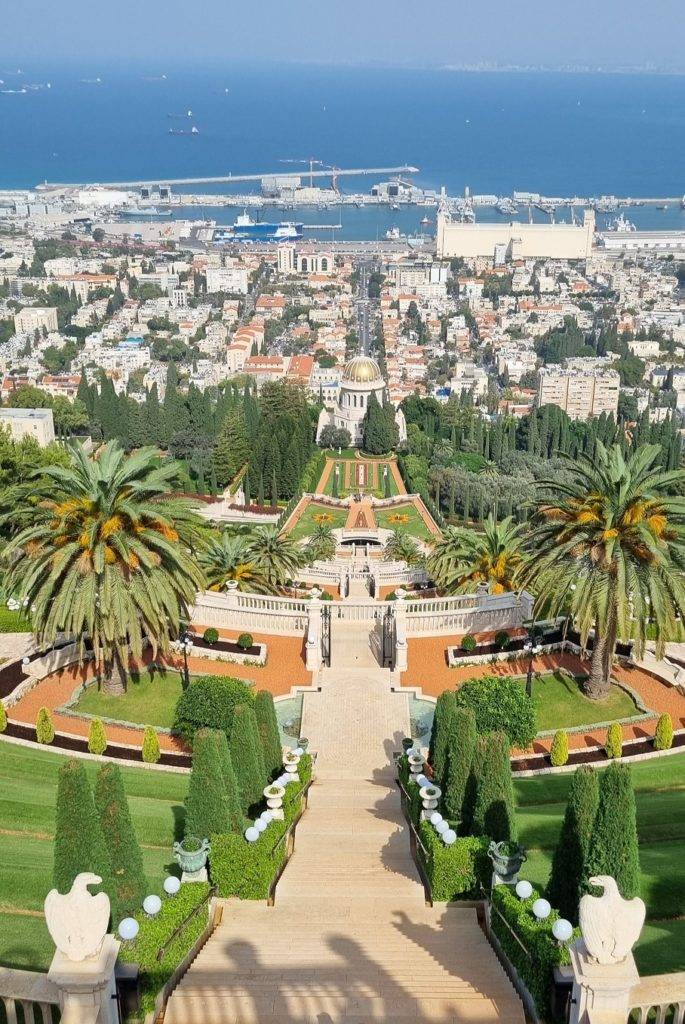
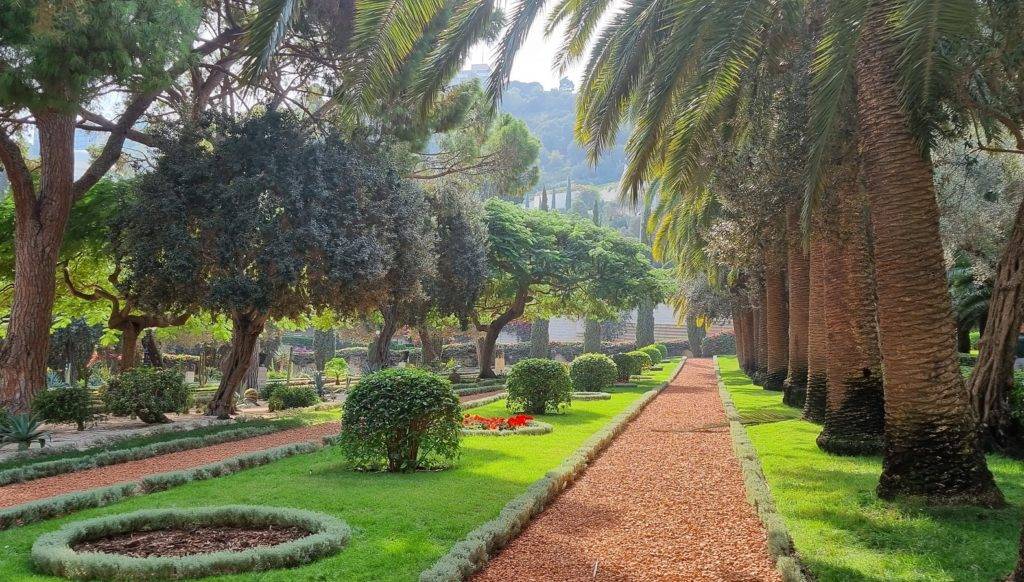
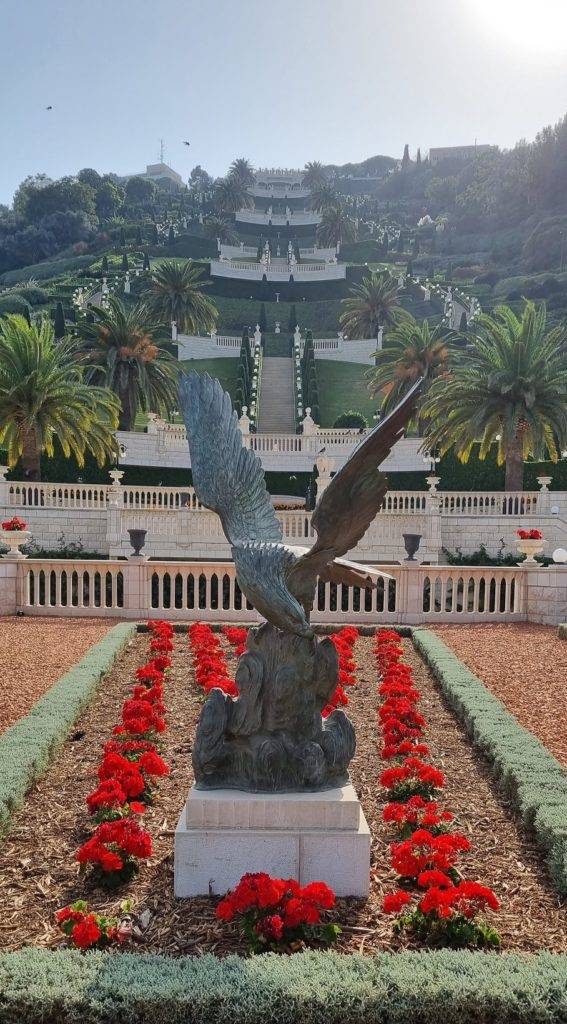
Eilat
We went down south to Eilat. It’s the place for a holiday. Lots of Israeli’s and tourist from all over the world come here for holiday. It has many hotel resorts close to the boulevard, beaches at the Red Sea, big shopping malls and lots of activity’s. Eilat is located at the Arabian Gulf, a part of the Red Sea that’s shared with Egypt and Jordan. I loved that from Eilat:, from the corner of Israel we were in, we could see Jordan and Egypt. By public transport it took us a 4 hour bus drive. We stayed at a great Airbnb for a good price for a couple of days (Eilat is
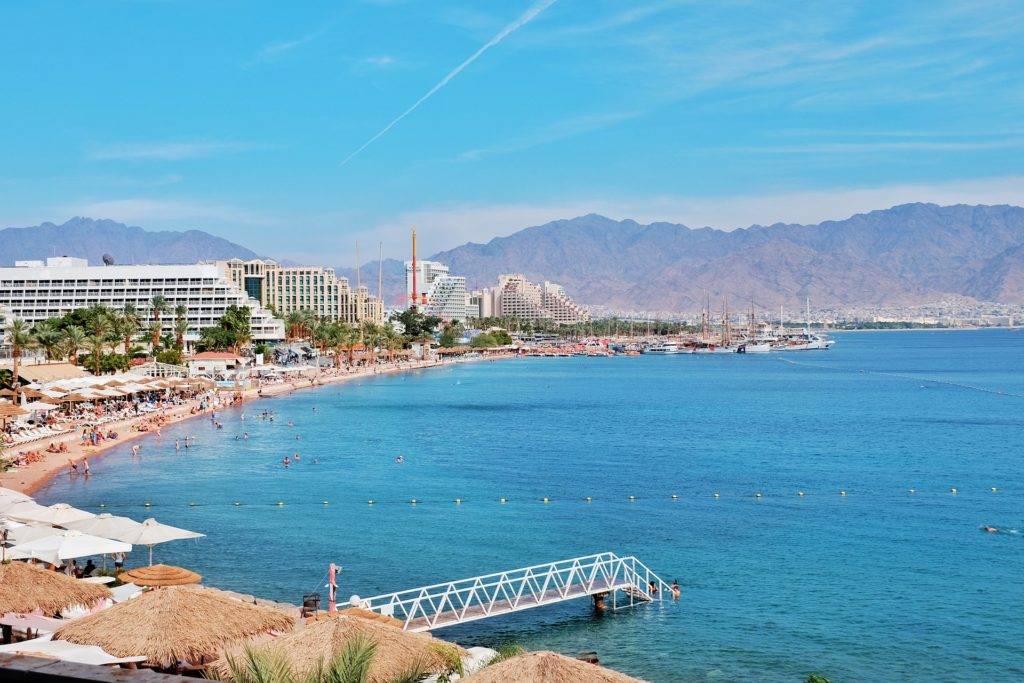
Eilat. Picture of Carlos Trần from Pixabay
relatively expensive). On our first day we went to the beach for a nice refreshing swim and some sunbathing. In November the temperatures start to cool down to 20 degrees, but in Eilat the temperatures are around 27 degrees.
Later that afternoon we took a public bus to the Red Canyon. We went at the end of the afternoon, because we thought the views were going to be prettier at sunset. But make sure you check the bus rides! The bus only comes once in 2 hours and when the sun is down it’s getting cold! You don’t want to wait for a bus for two hours in that cold! We were very lucky, we met a sweet Israeli couple who we did the hike with and they gave us a ride back to Eilat. The hike was stunning! First we walked down into the red canyon, it felt like we were walking in the Grand Canyon of the U.S. The rocks had so many colors of red! On our way back we climbed up with a bird eye view over the canyon. To top it off we saw a group of Ibex climbing the mountains.
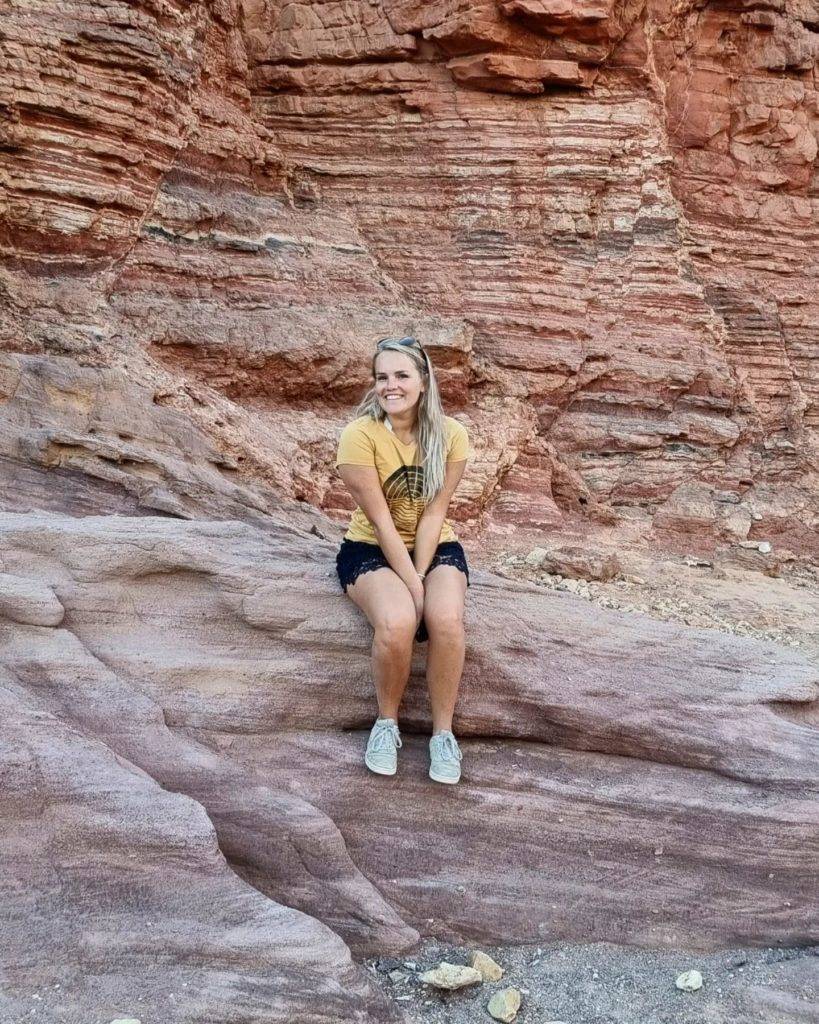
Beautiful red colors
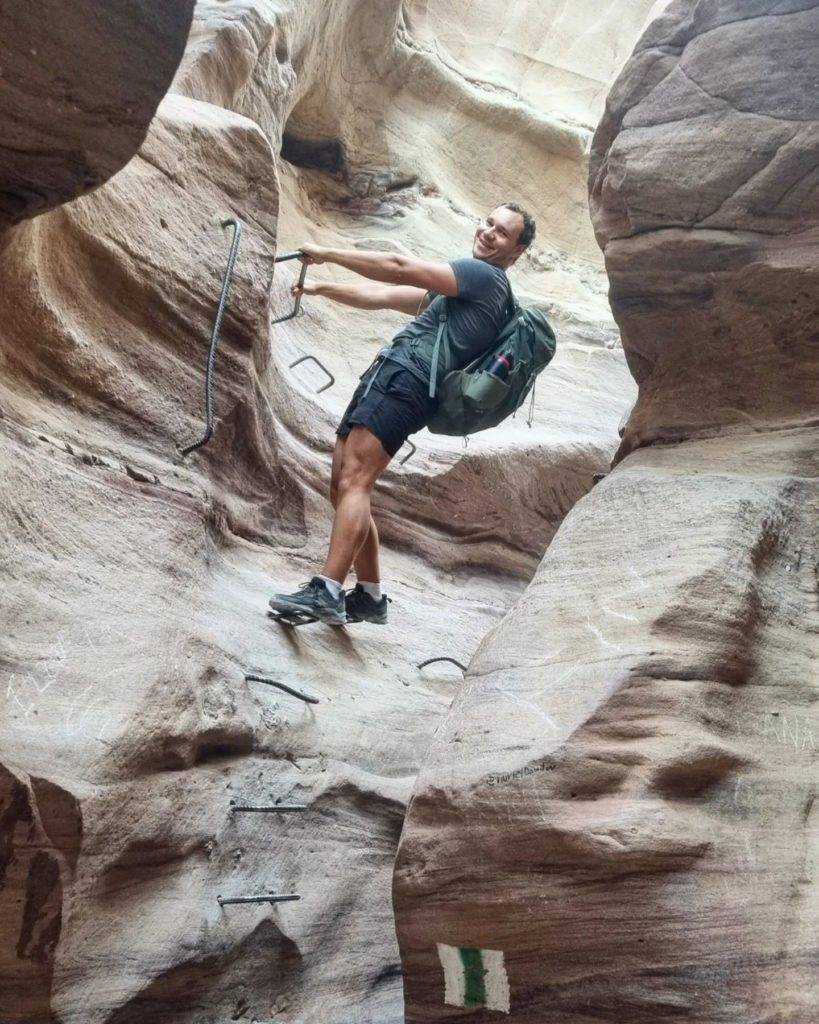
It could be very steep down
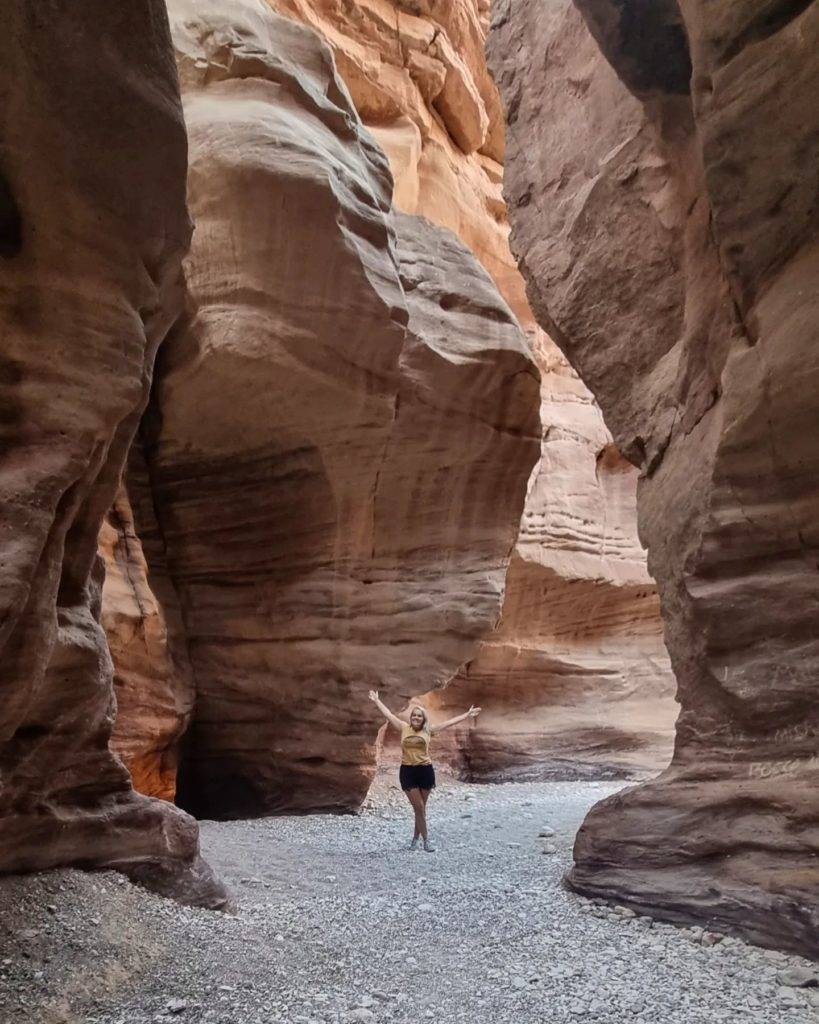
What a view!
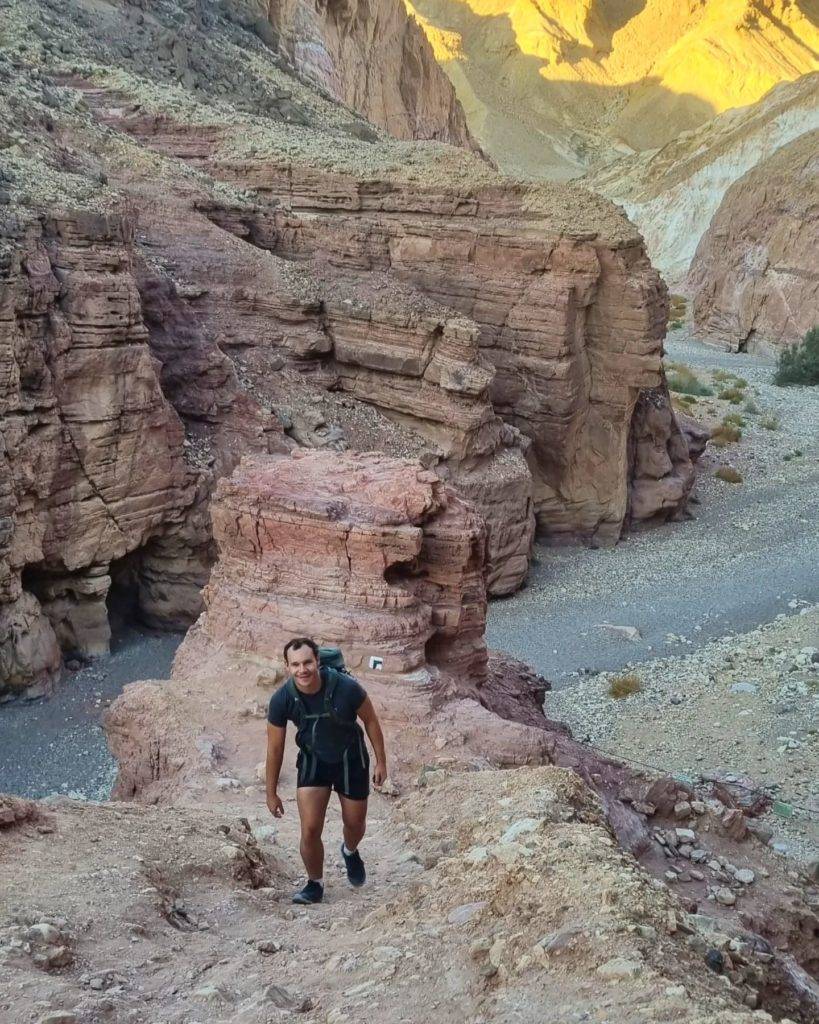
Climbing up
The Red Sea
The next day it was all about exploring the Red Sea reef. We went on a scuba diving trip with our Airbnb host. We went very early in de morning on sunrise. We went to the dolphin reef, this is an ecological site where you have the unique opportunity to actually observe dolphins up close in their own natural habitat. The dolphins like to come here early in the morning. We hoped to spot them, and we did! We saw three dolphins and they were very curious, they were circling around us. Besides the dolphins, we saw some beautiful soft corals, eels and lionfish too. On our second dive we saw a barracuda, puffer and a crocodile fish. I just love the Red Sea, the water is usually quite calm and you see so many beautiful corals and underwater life. So far, the Red Sea is still my favorite place for diving!
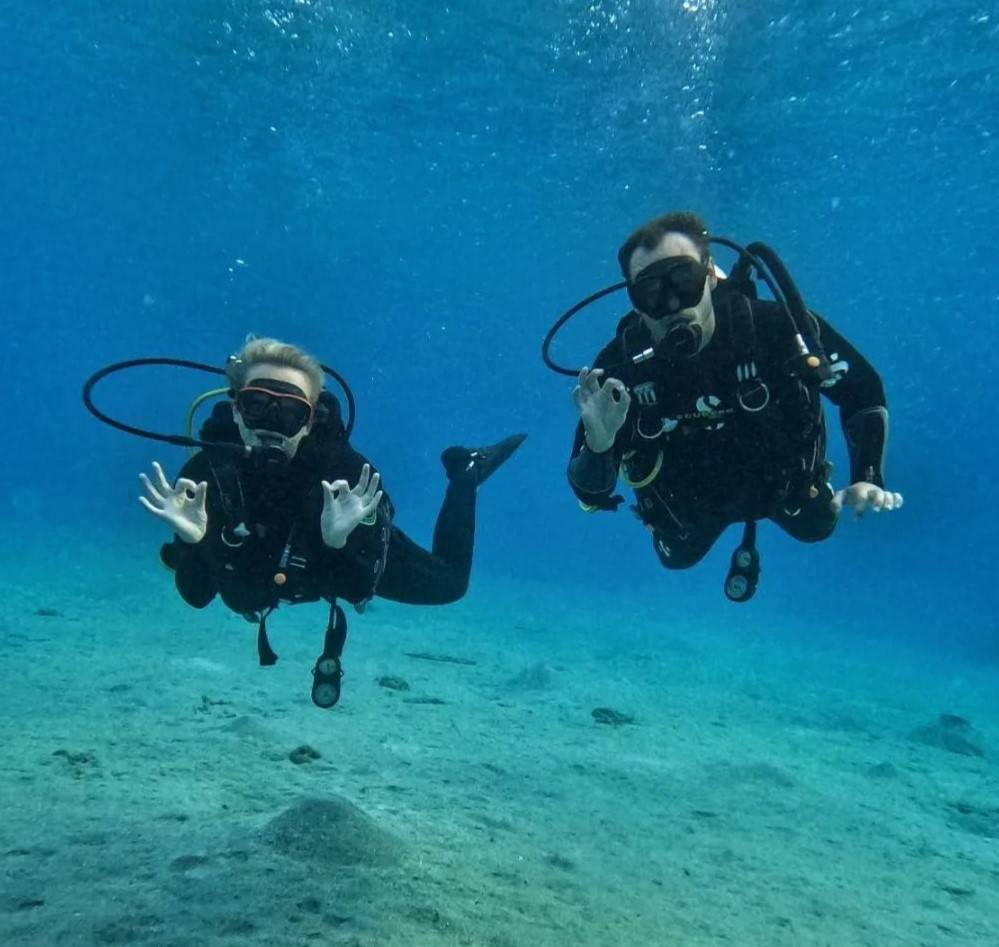
Our first diving picture together!

A bottle nose dolphin
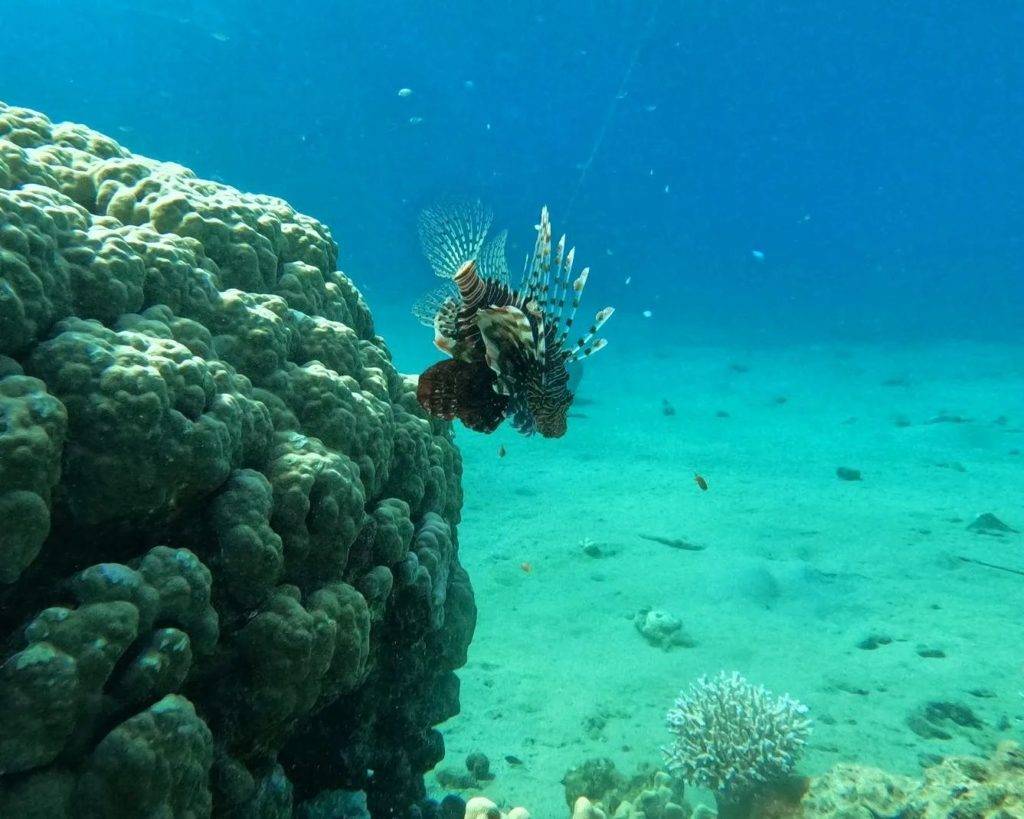
A lion fish
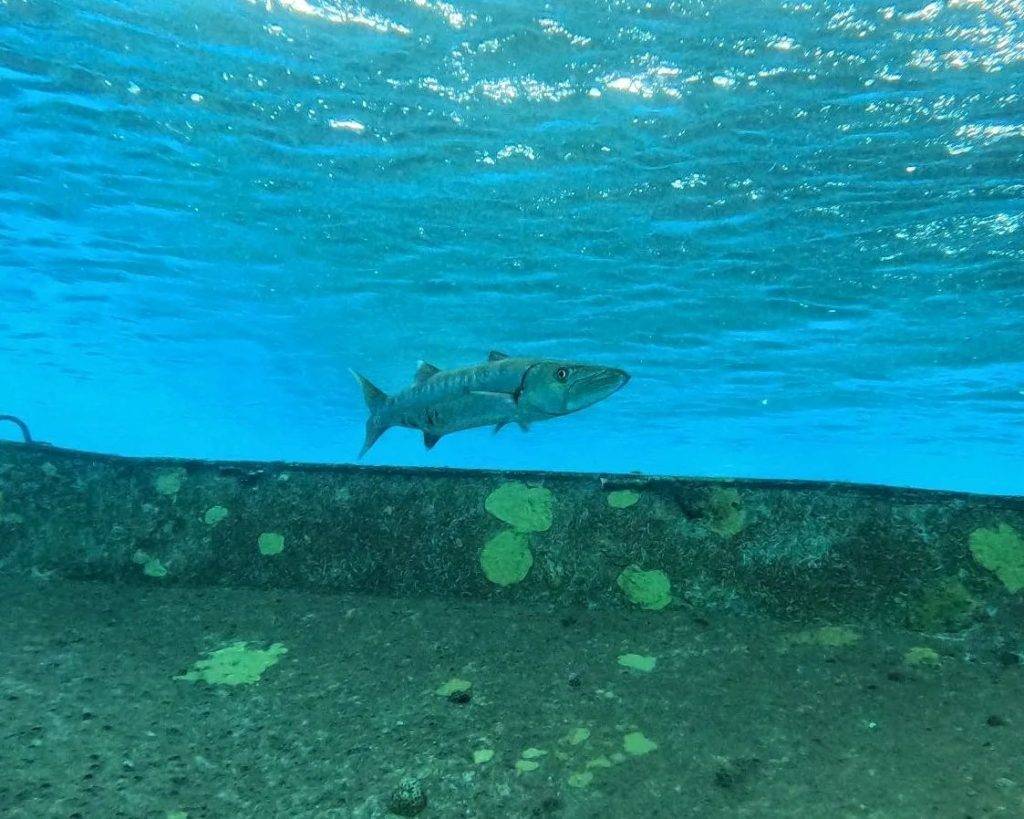
A scary looking Baracuda (he had his mouth open)
2-day trip to Jordan
Israel is next to Jordan. There are a couple of border crossings. In Eilat there is one to Jordan. Because of this reason it’s easy for a tourists to go on a day or multi-day trip to Jordan. We were in doubt in we wanted to do this. Last minute Jaron and I decided to go on a 2-day trip. It’s expensive, mainly because of all the border fees. We paid 400 euro per person for just 2 days. But it was worth it! It was an adventurous trip. We went on a 4×4 safari in Wadi Rum, slept in a Bedouin tent and went to one of seventh world wonders: Petra!
Want to read more? Click on the link below.
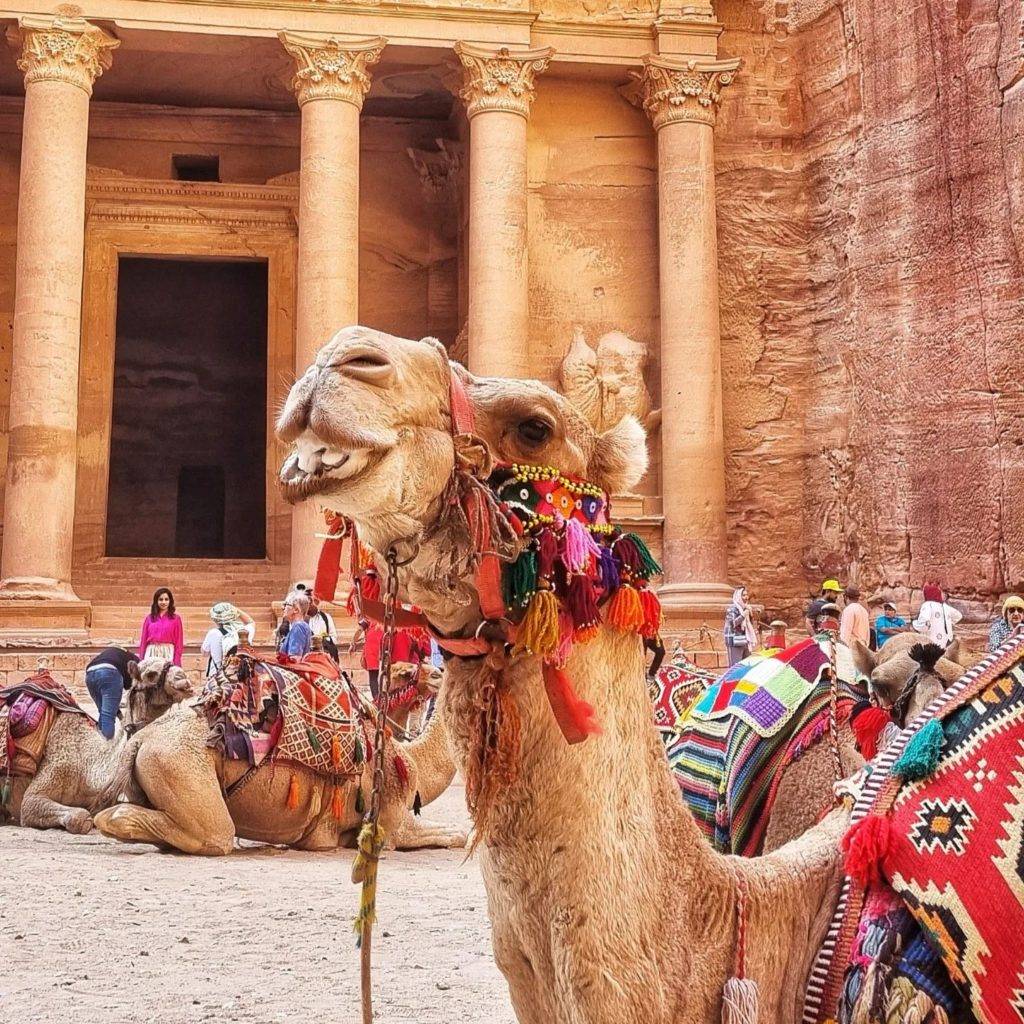
Tel Aviv
Tel Aviv is a big city on the Mediterranean sea with almost four million residents. It’s a very modern city with a cosmopolitan vibe. The most Mahorn international flights arrive here in Tel Aviv. The city has a lot to offer like beaches and art shops, but one of the major draws is the food. The culinary scene is full of fresh, organic ingredients and mixing traditional Israeli cuisine with tastes from around the world, reflecting the many ethnicities that make up the country’s population. You can also stroll the stalls at the Carmel Market and the Levinsky Market for tasty local street food.
Besides the good food, the other major draw is the nightlife in Tel Aviv. For a night out, you can find rooftop bars, wine bars, and craft beer breweries all over town. The best places are find at the Rothschild Boulevard. There are many artist living in Tel Aviv, from painting artists too music and magician artists. There’s a strong music scene with tons of live concerts happening around town. Make sure to check it out!
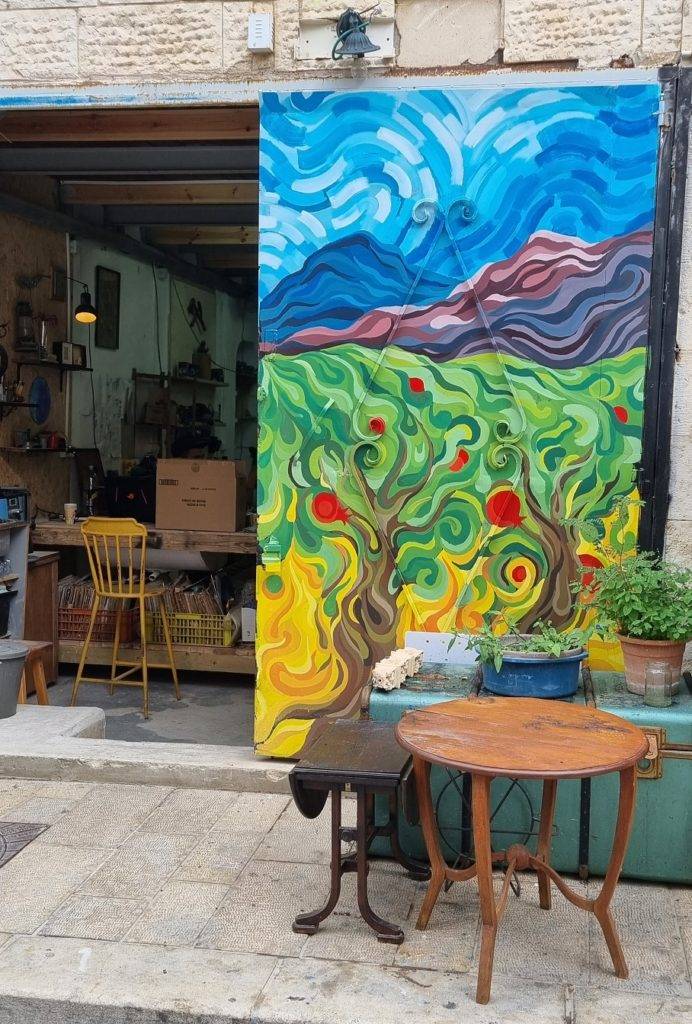
We stayed in Tel Aviv for 2 days. Unfortunately we haven’t seen all the highlights and did all the to-do’s. But we got a good taste of this cosmopolitan city. We stayed at a great hostel called Abraham hostel. It’s a well-organized hostel that includes breakfast. They organize many tours across the country. So definitely a good accommodation for a trip to Tel Aviv! After checking in we explored the city simply by walking. This is very doable! But if you prefer to take public transport make sure to download the app: Moovit.
We first walked through the Levinsky market where you can by all kinds of nuts, spices and herbs. Then we walked through the Florentin district, what should be the second hippest district in town, but we weren’t very impressed by it. After that we walked to the ancient port of Jaffa. Unfortunate it started raining a lot (November is the start of the rain season), but we found cover at the half-indoor flea market. We loved this Jaffa. It has a different vibe than the other places. It was chill, we saw surfers walking to the beach and many restaurants and arts shops to hang out. The architecture is old and something different and interesting. At Jaffa you’ll see a mixed population of Arabs and Jews and from here you have a great view of Tel Aviv. We stroll down along the beach looking at surfers catching a wave or being cached by one. We wanted to go shopping and walked towards the Dizengoff shopping mall. Half way our walk we arrived at the camel market. A big market full of spices, nuts, clothing, souvenirs and more. Definitely one to recommend. Dizengoff is a big indoor shopping mall with lots of fun clothing shops, Lego shop and more. We had dinner and afterwards we met up for drinks with some fellow magicians Jaron knows. So of course, a non-magician like me, was the person to do tricks on. I was entertained the whole night.
The next day we visited Jaron’s niece at her job in one of the biggest buildings in Tel Aviv: the Sarona building. Here you also have the Sarona market, a big indoor food market with lots os urban street food. Later that day we went back to the airport to go home after a long trip!
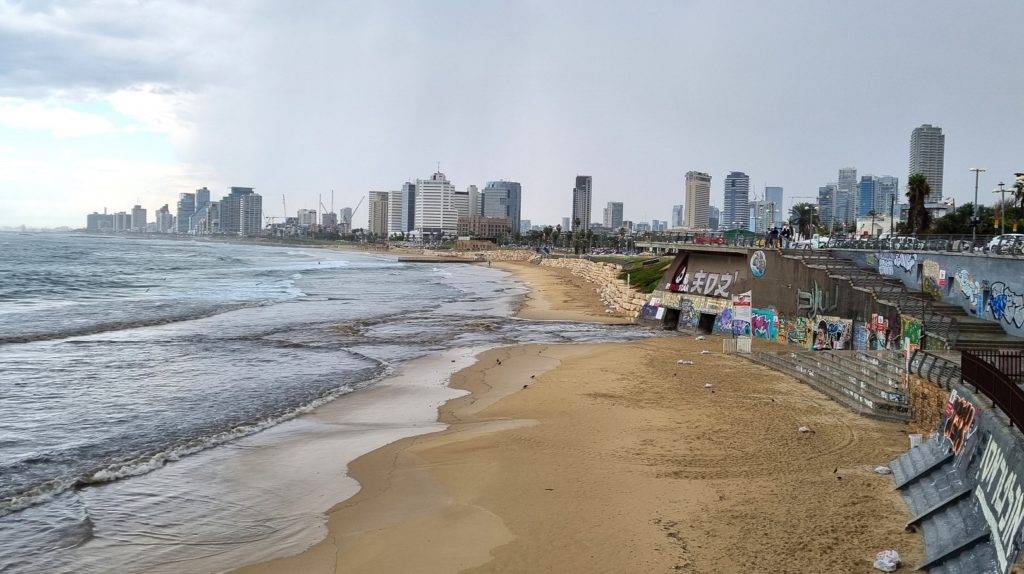
The beach
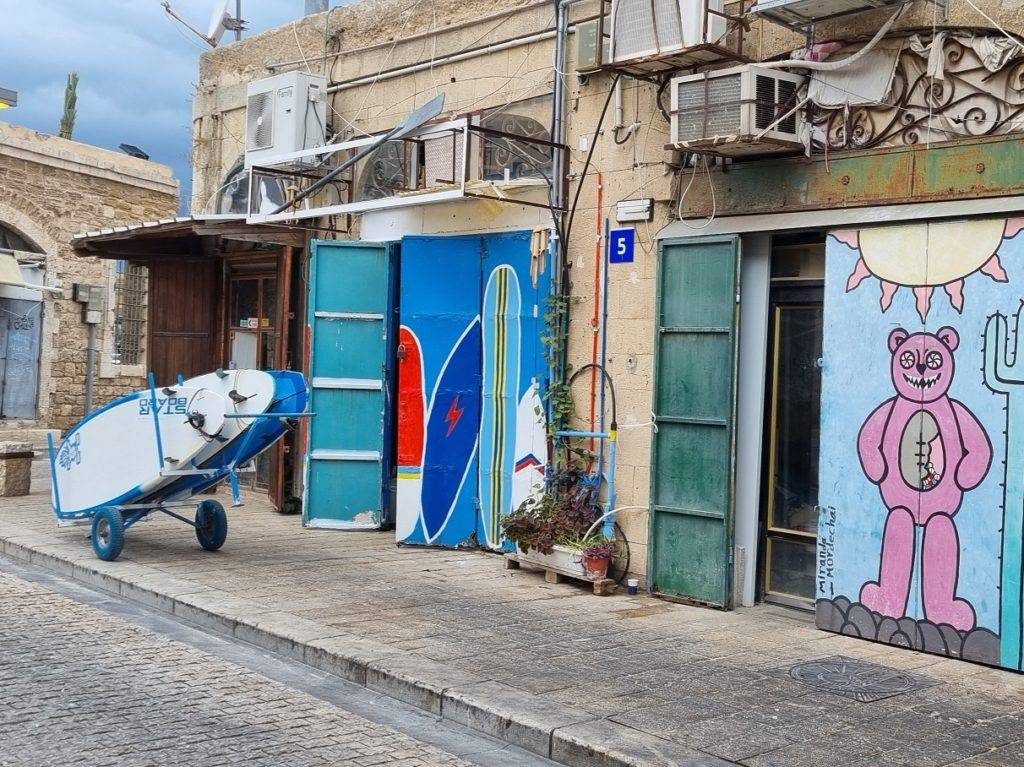
Art and waves
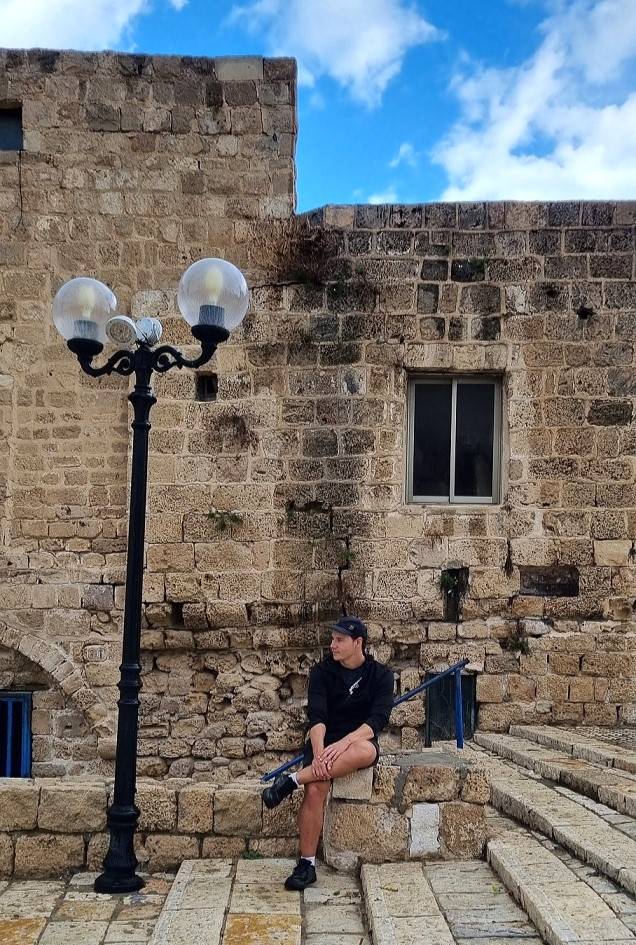
Jaffa

Small streets of Jaffa
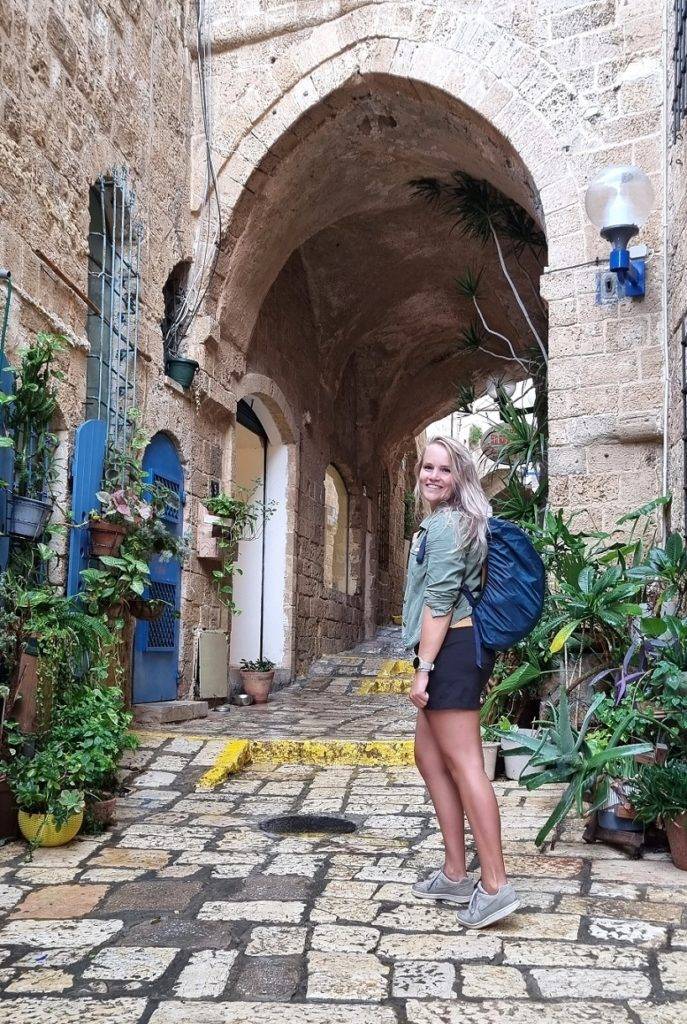
Walking to an art gallery

Camel market
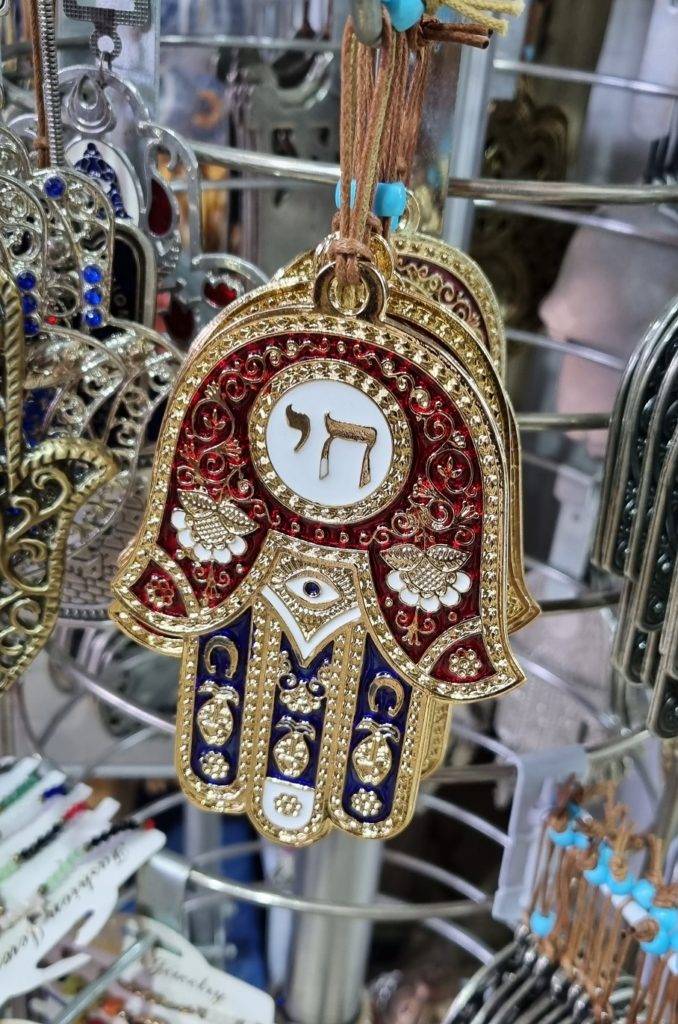
Souvenirs: Hamsa hand
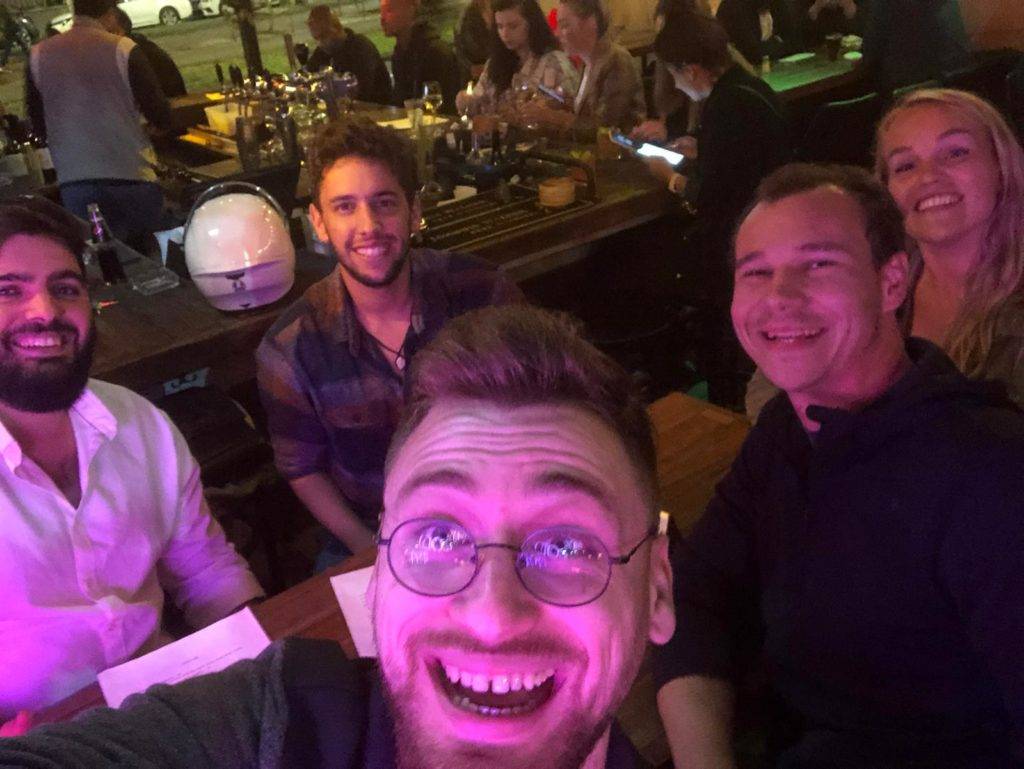
Meeting up with magicians
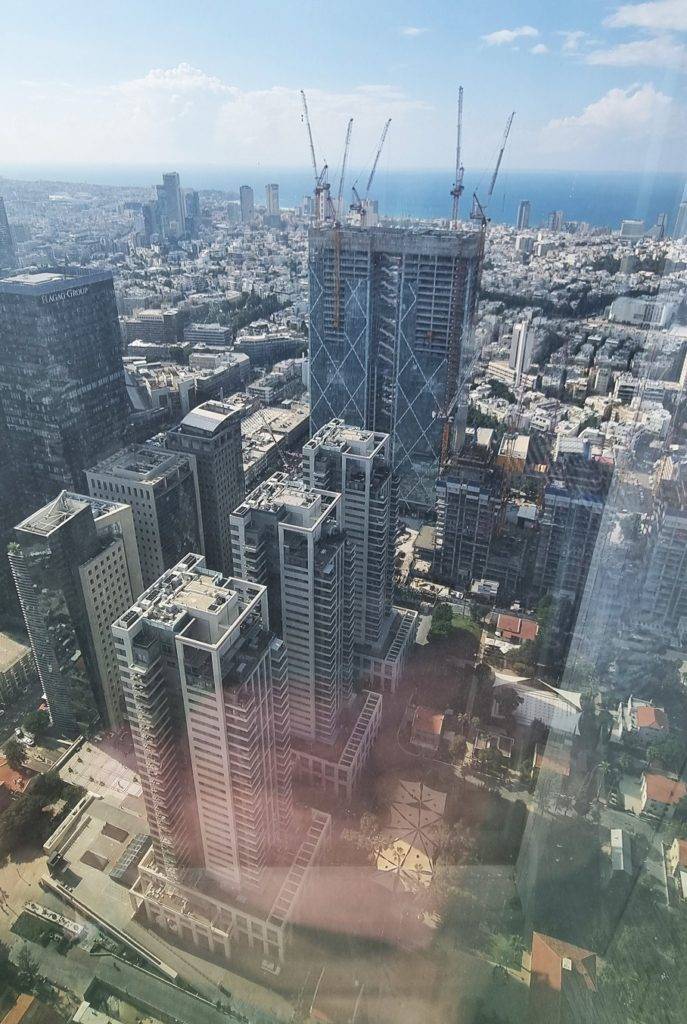
View from the Sarona tower
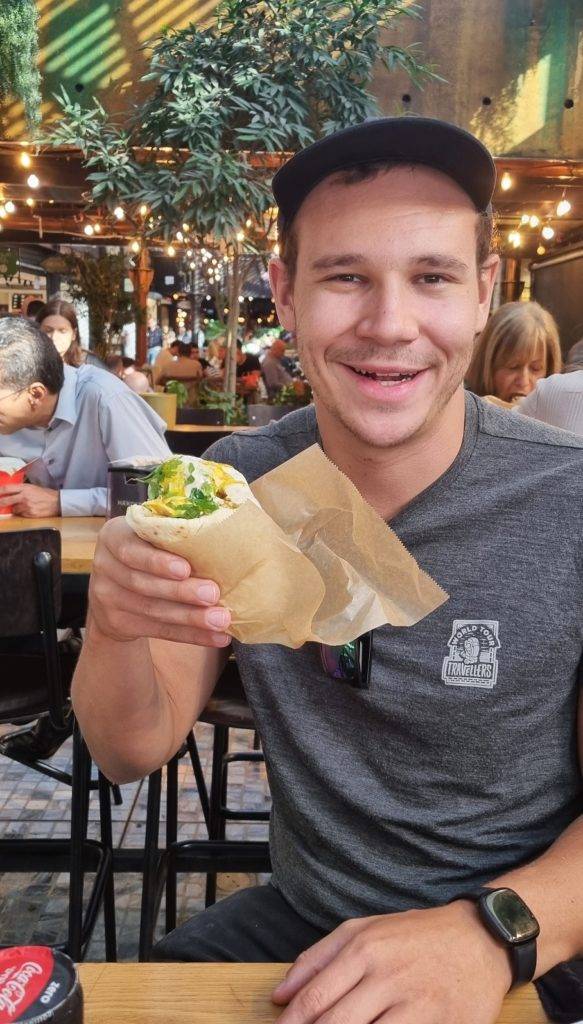
I miss the Pita bread with hummus
